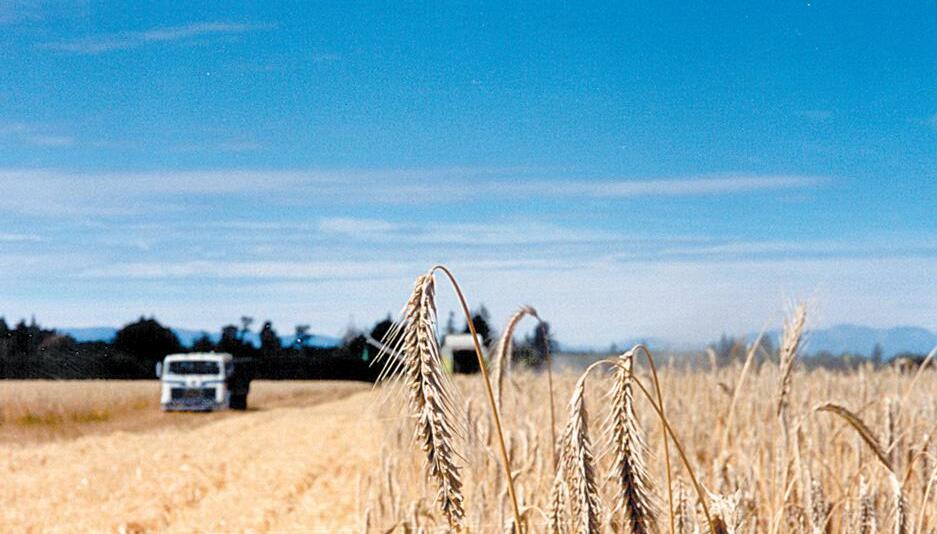


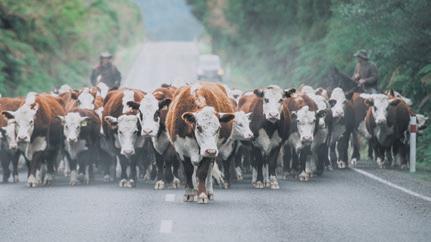
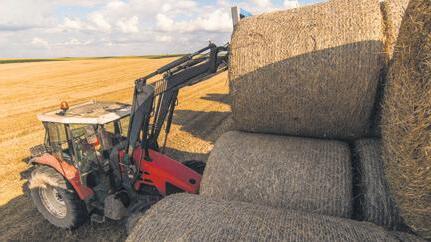














The association has pulled the plug on this year’s event in Christchurch which was scheduled to run over three days in early November. Canterbury Agricultural & Pastoral Association board chair Stewart Mitchell said the decision to postpone the 2024 Show was a very disappointing one to make.
“But after several challenging years it gives us an opportunity to completely rethink our strategic direction,” Mitchell said.
“The association’s ongoing business model is under review to reflect the environment we now operate in, a challenge common to most businesses throughout New Zealand currently.
“Twelve months of costs and three days of revenue is not a great business model by anyone’s analysis.”
Mitchell said after meeting with the Show’s General Committee to look at the numbers, they needed to make the hard choice about whether it would be financially viable to go ahead with the Show in November.


May 2024 Edition INSIDE THIS EDITION Need a lawyer? OUR LOCATIONS: SELWYN 03 348 8480 WEST COAST 03 755 8673 CBD AND RICCARTON 03 348 8480 PARRYFIELD.COM Judith Bullin, Partner, Parry Field Lawyers ▪ Agri-business ▪ Disputes ▪ Wills & Asset Planning Our team can work to support your business growth or give you peace of mind around planning, property or personal matters. Talk to us today about how we can help. Getting the right advice early makes a difference. LOCAL LEGAL SPECIALISTS TO PAGE 2 Financial considerations are behind a decision to cancel this year’s New Zealand Agricultural Show run by the Canterbury Agricultural & Pastoral Association. Another no show for the Show On hold: While this year’s three-day New Zealand agricultural Show run by the Canterbury agricultural & Pastoral association has been cancelled the stock judging and competition events will still go ahead. 30,287 copies distributed monthly – to every rural mailbox in Canterbury and the West Coast for over 25 years Nitrates in water p5 Moving day p13 Safety alerts p28 Water storage p30
by Kent Caddick
]
Challenges aplenty for Canterbury A&P Association
FROM PAGE 1
“Unfortunately, after reviewing the latest financial position and projections, and considering the General Committee’s deliberations, the Board concluded it would be unwise to proceed with a full-scale public Show for 2024.
“After two Covid years and a recent financial loss in 2023, the Association’s financial reserves are limited, and with highly variable income streams, we are unable to sustain the risk of another loss in 2024.”
He said rising wage and compliance costs have been another contributing factor and have significantly impacted their bottom line in recent years.
“Finally, given the prevailing economic conditions are likely to adversely affect the Show’s three main income streams of sponsorship, exhibitors and gate revenue, the risk of proceeding and incurring potential losses, without any significant reserves, was too great.”
Mitchell said with this postponement for 2024, they’re now working with the General Committee on consolidating revenue and reserves through this period and are planning for the return of the Show in 2025.

WE ARE BUYING!
He said the Board has signalled its wish for the review of the governance model in the Constitution, started in 2023 to continue to completion.
cial transaction with the Christchurch City Council. The transaction will see land the A&P Association hold a 100-year lease on, be transferred to the Council for public use.
Christchurch Mayor Phil Mauger said it was very disappointing to hear about the postponement of this year’s A&P Show.






President of the General Committee of the Canterbury Agricultural & Pastoral Association Bryce Murray said they know the cancellation will be sad news for the more than 100,000 people who normally attend the Show and all their exhibitors.
“The Show has been running in Christchurch since 1863 and while this is frustrating, we promise to be back stronger and better than ever next year,” Murray said.
“The November event is popular with both the rural and local community and brings people from around the country to our city. It really is the highlight on Christchurch’s event calendar for the year,” Mauger said.








“We still plan to continue with the stock judging and competition events this year, as we did during the ‘No Show’ Covid years of 2020 and 2021.”
Meanwhile, the Canterbury A&P Association is also close to concluding a commer-
“However, like so many organisations and businesses around the country, the Canterbury Agricultural & Pastoral Association has faced a number of challenges over the last few years.
“Two years of Covid and rising costs have certainly made a huge dent in the Association’s finances.”









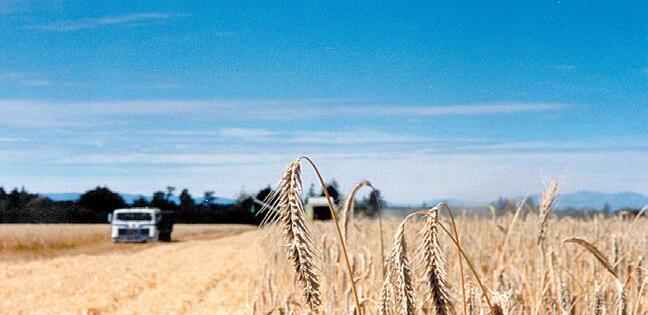








2 May 2024 CANTERBURY FARMING FARMING NEWS Corner Main South Road and Epsom Road, Sockburn, Christchurch Ph: 03 348 4129 or 0800 655 551 Rangiora Service Centre, 78 Ivory St, Ph: 03 313 7059 www.avoncityford.com
are currently looking to o buy good quality NZ new cars If you are thinking of selling your car please get in touch with our Buyer... Forbes Gourlay | PH: 027 222 5000
We
Options: The Canterbury agricultural & Pastoral association is in discussions with the Christchurch City Council which could see its 100-year lease on its show site be transferred to the council for public use.
Barley yields hit record high
] by Kent Caddick
Figures released by the Foundation for Arable Research (FAR) show Autumn-sown barley yields for 2023-24 are well above the fouryear mean in Canterbury, at both the irrigated site, where an average of 13.2 tonne/ha was recorded, and dryland site (13.0 t/ha).
“These are the highest recorded autumnsown barley yields in a CPT trial since records began,” FAR’s CPT manager Tabitha Armour said.
“As this is an average, some individual trials approached yields of 14t/ha. This is close to the former world record barley yield of 13.8t/ha set by South Canterbury growers Warren and Joy Darling in 2015.”
Canterbury barley yields this harvest, based on Cultivar Performance Trial results, are the highest ever recorded, according to the Foundation for Arable Research. Record yields: Figures released by the Foundation for arable Research show autumn-sown barley yields for 2023-24 are well above the four-year mean in Canterbury.
In comparison, the four-year mean for trials sown from 2020 to 2023 is 10t/ha for irrigated barley (Chertsey) and 10.9t/ha for dryland barley (St Andrews).
Armour said irrigated feed and milling wheat yields were also above average in Canterbury this harvest.
Feed wheat recorded 14.8t/ha, averaged across four irrigated trial sites, up 1.8 t/ha on the four-year mean. Milling wheat was 12.2t/ha (up 1t/ha).
“Dryland feed wheat yields in Canterbury, Southland and the southern North Island were similar to the four-year mean, although this depended on location, with most sites experiencing below average rainfall for several months during the season.”
Armour said new feed wheat entry KFW2201 was in the top yielding group in all locations tested, and out yielded all other entries in four of the six Canterbury trial sites.
“Some cultivars producing good yields are susceptible to disease, as shown in fungi-
cide treated versus untreated trials,” Armour said.
Hail in the Methven region damaged a milling wheat trial and another trial in Fairlie was compromised due to rainfall events during establishment.


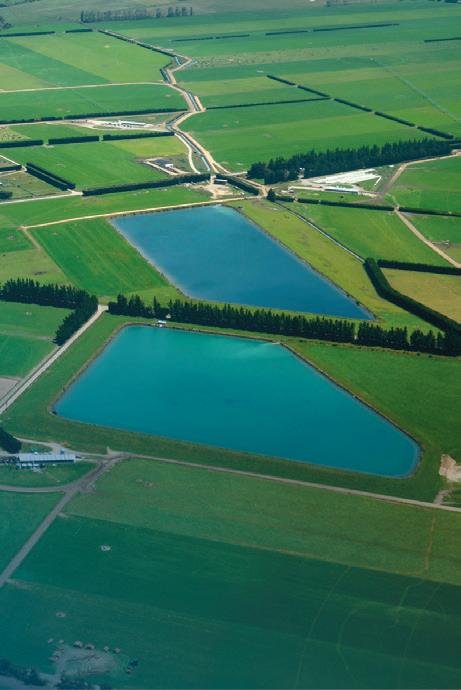





armour said irrigated feed and milling wheat yields were also above average in Canterbury this harvest.

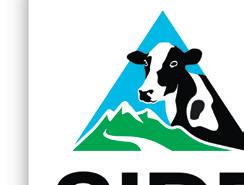







CANTERBURY FARMING May 2024 3 FARMING NEWS
Information for this article was supplied by the Foundation for arable Research. For more information, visit the FaR website www.far.org.nz.
SIDE is an event specifically for South Island based farmers, created and managed by farmers for farmers A cost effective conference that touches on the important issues for farming in the South Island that will add real value to your business while also providing much needed off farm time and social contact REGISTER ONLINE TODAY! BrightSIDE will coach them on areas such as: Budgeting Se f improvement An mal health People management ski ls Pasture management Science pro ects at the research farm www side org nz BrightSIDE was created to inspire encourage and inform those starting out on their journey in the dairy industry, showing them the pos tive side and the opportunities a da rying career can provide BrightSIDE attendees wil get exposure to eaders in the industry the main SIDE event and the Ashley Dene research farm www.side.org.nz Dam safety regulations GET READY NOW
you
Government
ACT NOW For more info, go to ecan.govt.nz/new-dam-regulation
delay!
start
13
2024. * A classifiable structure is now 4 metres or more in height and stores 20,000 or more cubic metres of water or other fluid. NEW ‘
Do
have a dam or similar water-retention structure on your property? The
has recently changed the classification of affected dams.* Calculate now if it falls under the regulations.
Don’t
The new regulations
on
May
Tabitha Armour CPT Manager, Foundation for Arable Research







] with Todd McClay ] Minister for Agriculture
Fostering a fair regulatory environment
The coalition Government is steadfast in its commitment to helping farmers and other primary industry professionals get on with producing world best, high-quality food and fibre products.
We are focused on achieving outcomes rather than getting bogged down in processes to avoid dumping undue costs on those who are central to revitalising the New Zealand economy.
For this reason, we will introduce a bill to amend the Resource Management Act (RMA), designed to significantly reduce the regulatory complexities faced by those applying for resource consents, with the goal of passing this into law later this year.
Our approach is rooted in the trust, common sense, and environmental stewardship of our farmers. We believe that those who work the land are best positioned to manage its resources responsibly.
To support key primary sectors that are pivotal to rebuilding the New Zealand economy, the upcoming bill includes several pivotal changes. These include:
• Streamlining consenting processes: We are removing the obligation for consent applicants to adhere to complex hierarchies as implemented by the previous labour government and instead, simplifying how water resources are managed across sectors.
• Amending stock exclusion regulations in relation to sloped land: Instead of onesize-fits-all rules, we propose a risk-based approach so that decisions on where to exclude stock be determined on local risk assessments conducted by regional councils and farmers themselves.
• Repealing winter grazing regulations: we are eliminating winter grazing regulations, reducing the bureaucratic burden, and trusting regional councils and farmers to oversee these activities effectively, based on local conditions.
• Aligning the consenting pathway for coal mining: We are aligning the pathway for coal mining with other mining activities in the National Policy Statement for Indigenous Biodiversity (NPS-IB), NPS-FM, and the National Environmental Standards for Freshwater (NES-F).
• Pausing Identification of Significant Natural Areas: we are suspending the requirement for councils to identify new Significant Natural Areas (SNAs) in accordance with the NPS-IB for three years, to give enough time for a thorough review of how they operate.
These reforms restore trust in farmers’ judgment and land management experience. Many farmers have already demonstrated their commitment to protecting our waterways by excluding livestock from sensitive areas. It’s time their efforts are recognised and supported, rather than burdened with excessive regulation.
Furthermore, we are enhancing non-regulatory support to encourage and uphold best practices in winter grazing—practices that many regions like Otago, Canterbury, and Southland have already successfully integrated into their regional plans.
Where there are no local rules, the onus will remain with farmers to follow good practice. And we know from regional councils that there has already been a significant improvement in winter grazing practices, with farmers proactively changing where they plant fodder crops and how they manage winter grazing.
We will also be working with industry groups and councils to ensure that this is the case and promote best practice.
Work on low cost and practical farm plans that focus on environmental outcome not costly processes is already underway. In the
‘It’s time farmers’ efforts are recognised and supported, rather than burdened with excessive regulation.
long term, the intention is that these farm plans will provide a way to manage the impacts of farming activities on freshwater, including winter grazing and stock exclusion, in a risk-based and practical way. We believe they are a key tool for managing freshwater risks moving forward.
These legislative reforms are not just about reducing compliance costs, but about acknowledging and leveraging the inherent knowledge and responsibility of our farmers to steward the land and water resources that define our nation’s economic profitability.
As we move forward, the coalition Government remains committed to fostering a regulatory environment that boosts industry, and supports profitability and sustainability in equal measure.
Update reflects tough times for farmers
According to Beef + Lamb New Zealand’s Mid-Season Update farmers will have to continue to dig deep to stem what looks like widespread cash losses in the sheep and beef sector for the 2023-24 financial year.
] by Kent Caddick
B+LNZ chief executive Sam McIvor said the outlook for 2023-24 has worsened significantly since their forecasts in October, because there has been no recovery in China, and Australian exports of red meat have been bigger than originally forecast.
“An excellent lamb crop last spring has meant there are more lambs to sell, but this cannot compensate for lower per head prices and unavoidably high costs. Farm profits are forecast to be down 54% to an average of $62,600 per farm,” McIvor said.
“This is a 67% fall in farm profit from the 2021-22 year to profit levels not seen since the 80s, except for during the Global Financial Crisis.
“Input costs remain stubbornly high, we know farmers are feeling it, many have already worked hard on cutting costs and my conversations indicate they’re leaving no stone unturned to find additional savings. This is especially true for farmers with relatively high debt levels.
“They’re also looking to maximise income and taking stock to heavier weights and where feed allows, this is commonplace.”
The update shows that China’s economic recovery remains slow, resulting in decreased demand and lower farm-gate prices, especially for lamb and mutton.
The increased supply from Australia into international meat markets is also contributing to a global reduction in prices.
“Both of these dynamics are not expected to change much before the end of the season,” McIvor said.
As a result, the forecast for lamb and mutton prices for the season has been revised
downwards. The annual weighted average all classes lamb price for 2023-24 is estimated at 651 c/kgCW1, down 12% on 2022-23 and 13% lower than the five-year average.
The annual weighted average all classes mutton price for 2023-24 is estimated at 241 c/kgCW, down 34% on 2022-23 and 49% lower than the five-year average.
New Zealand’s export receipts for lamb and mutton are forecast to be down 4.8% and nearly 20% respectively on last year.
However, McIvor said they were some positive signs.
“Beef has held up much better, driven by significant demand out of the US as it rebuilds its herd post-drought. All Beef is forecast to average $5.15 per kgCW for the season, which is 2.9% down on last year, but 2% higher than the five-year average.
“Demand for lamb in Europe and the US has also been strong and this is expected to continue for the rest of the season.”
He said certain farm classes, such as High Country, Hard Hill country, and South Island Hill Country, are hardest hit with profitability due to their heavier reliance on sheep revenue.
“Farmers should be talking to their accountants and bank managers about tax planning and cash flow management.
“I would expect bankers will be working to support farmers during this tough period, as the sector’s longer-term prospects are strong and it will recover,” McIvor said.
Information for this article was supplied by Beef + Lamb New Zealand. For more information, refer to the complete Mid-Season Update 2023-24 Summary and the full Mid-Season Update 2023-24, available on the B+LNZ website.
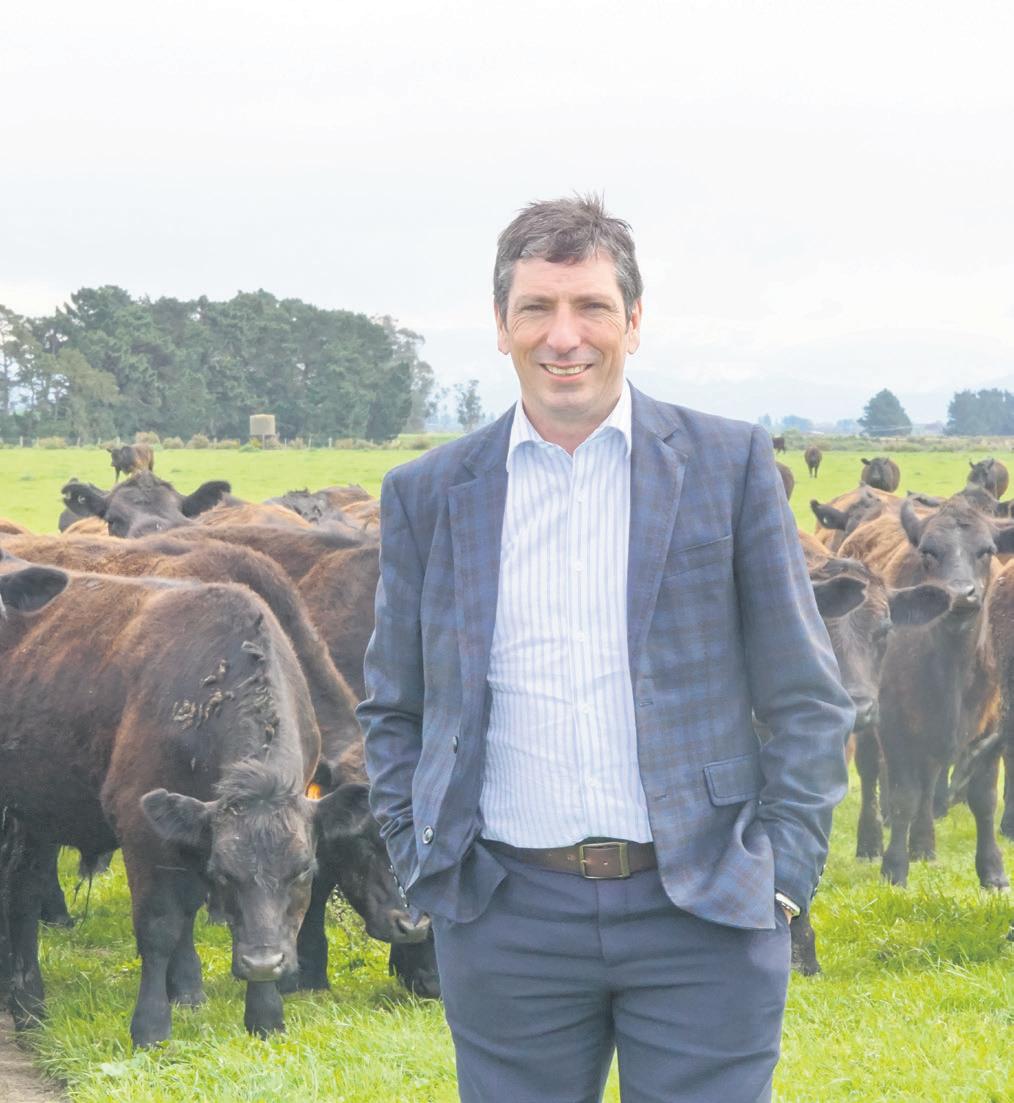
4 May 2024 CANTERBURY FARMING FARMING NEWS
Doing it tough: B+LNZ chief executive Sam McIvor says a slow economic recovery in China plus an increased supply from australia into international meat markets are contributing to a global reduction in prices.
Nitrate contamination in Canterbury rural water supplies
Greenpeace Aotearoa is expressing concerns over nitrate contamination in several Canterbury rural water supplies. The concerns have been raised after water testing late last month revealed the town supply in both Darfield and Kirwee was around 5 mg/L of nitrate.
] by Kent Caddick
Studies have found potential increased reproductive risks at this level of contamination, including preterm births and underweight babies.
Studies have also linked nitrate contamination at 1 mg/L, five times lower than the Darfield town supply, to a potential increased risk of colorectal cancer.
Greenpeace spokesperson Gen Toop said it was unacceptable that members of the public in Darfield are having to drink water with potentially unsafe levels of nitrate.
“Environment Canterbury and the Government have a responsibility to prevent nitrate contamination in drinking water from intensive dairying and right now they’re failing.”
Toop said data collected by Greenpeace showed that the town supply in Darfield and Kirwee sat at around 5 mg/L of nitrate in the drinking water. It also showed that several private bores in the area were above the current official health limit of 11.3 mg/L. This limit was set decades ago to prevent Blue Baby Syndrome.
“Everyone has a right to safe clean drinking water, but many rural communities, like
Darfield, are experiencing elevated levels of nitrate contamination in their drinking water which is linked to increased risk of bowel cancer and reproductive issues,” Toop said.
She said the New Zealand college of midwives advises that pregnant women should avoid drinking water that is over 5 mg/L of nitrate.
“Canterbury’s water is particularly prone to nitrate contamination, in part because of the explosion in cow numbers and synthetic nitrogen fertiliser use in the region.
“Cow urine and synthetic fertiliser can leach through the soil and into the groundwater, and eventually end up in people’s drinking water.
“Ultimately, the best solution to nitrate contamination is to stop the pollution at the source.”
Toop said that means Environment Canterbury and the Government need to phase out synthetic nitrogen fertiliser use and lower the numbers of cows in Canterbury.
“Right now, rural communities are most at risk, but even in Christchurch, New Zealand’s third largest city, experts have warned that nitrate contamination in drinking water will increase in coming decades.”
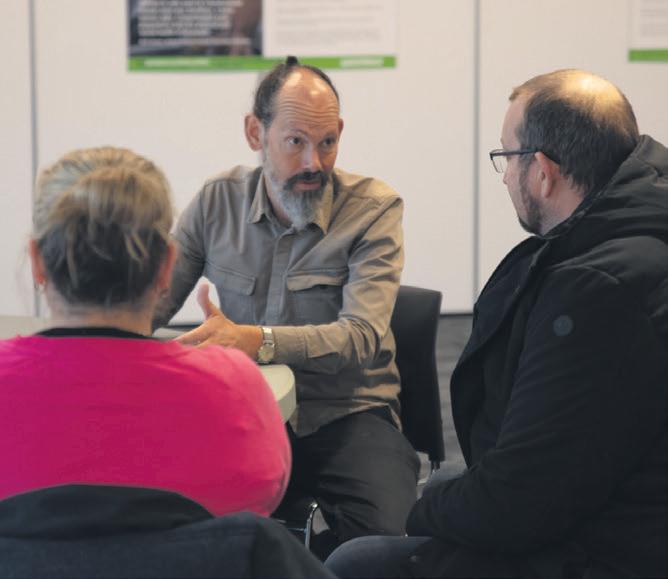
The Government is currently planning to replace New Zealand’s freshwater protections. One of the Ministers in charge, Andrew Hoggard, is an ex-Federated Farmers lobbyist.
Testing times: Former Greenpeace senior campaigner Steve abel, now a Green Party MP and the party’s spokesperson for agriculture, speaking to Dunsandel residents at a previous water testing meeting in the Canterbury township in 2021.
Greenpeace is calling on the Government to keep its hands off the current freshwater protections. The organisation is also calling on the Government to lower the maximum allowable value of nitrate in drinking water to 1 mg/L.
CHOOSE A SOLUTION. CHOOSE SUMO.
To find out the condition of your rural water supply check out Greenpeace’s Know your Nitrate map which can be found at: maps.greenpeace.org/maps/ aotearoa/know-your-nitrate

MOUNTED TRIO GLS SUBSOILER
As its name suggests the Sumo Trio consists of 3 parts to help develop and create an ideal seed bed in all soil conditions.
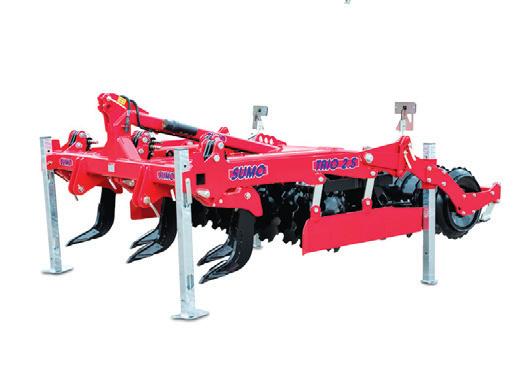
First stage: Staggered row of subsoiler legs with a maximum working depth of 400mm. (both hydraulic and shear pin protection systems available)
Secondary stage: Two rows of 500mm concave discs equipped with triple sealed bearings and Sumo’s famous double drive system giving unrivalled performance when working in adverse conditions.
Third stage: Sumo’s 760mm multipacker roller with replaceable shoulders leaves a weatherproof level finish in the most challenging soil conditions.
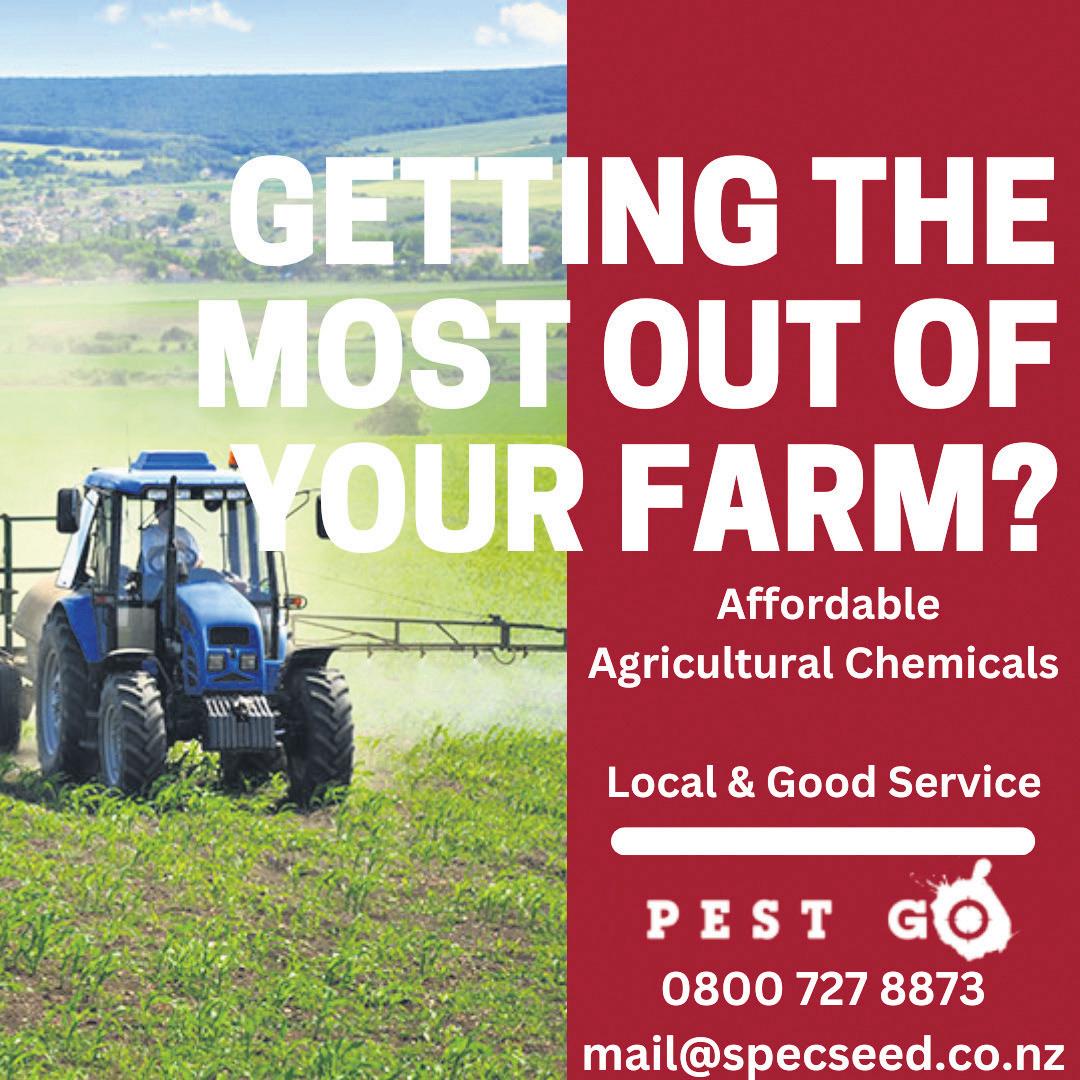
The Sumo Grassland subsoiler improves and revitalises compacted grassland that is suffering from the effects of continual livestock, rainfall and heavy machinery.
• Leading row of adjustable individually suspended discs allow minimum disturbance on the pasture surface.

• Hydraulic Subsoiler legs with working depths from 100-350mm to suit all types of compaction layer depths with quick change points.
• Rear flat packer roller with scrapers to leave an aerated consolidated level finish across the full working width.

CANTERBURY FARMING May 2024 5 FARMING NEWS SOUTH ISLAND www.cochranes.co.nz Call Alastair Robertson | 027 435 2642 AMBERLEY | LEESTON | ASHBURTON TIMARU | OAMARU
MADE IN THE UK
OVER 3000 SOLD WORLDWIDE
Photo by Zoe Deans






] with Jo Luxton



Cuts put national herd at risk
The National Government’s cuts have gone too far, and I know I’m not alone in worrying about what the cutbacks at MPI and Customs means for biosecurity and for farmers.
] Labour spokesperson for Agriculture
Customs officers are being asked to take redundancy and there is widespread concern about the cuts to the Ministry for Primary Industries (MPI) and our ongoing ability to eradicate Mycoplasma bovis (M. bovis).
The choices they’ve made put our border defence and the health of our national herd at risk.
The threat of a biosecurity incursion hasn’t decreased, but our ability to deal with it will. That’s a worrying prospect. M. bovis was first detected in New Zealand in 2017.
Tests conducted by MPI revealed the disease most likely established itself in the country 18 months prior.
As we know, the bacterium causes mastitis and arthritis in adult cattle and pneumonia in calves. It therefore poses serious animal welfare issues and financial risk to New Zealand.
If left to spread M. bovis had the potential to devastate the New Zealand farming community and seriously hurt our economy. That risk still exists so long as the disease is not eradicated.
That’s why the Labour Government, alongside DairyNZ and Beef + Lamb, took the matter seriously and committed to eradicating the disease.
It is due to a properly staffed and resourced Ministry of Primary Industries that this plan has been such a success so far. It

was once someone’s job at MPI to plan for a potential incursion such as M.bovis.
It was once someone’s job at the Ministry of Health to plan for a potential global pandemic. Unfortunately, it is these sorts of roles that the new Government deem “wasteful spending” and “bureaucratic back-office functions”.
In reality, they are vital to our preparedness for scenarios we know can and will continue to occur.
The fact M. bovis was able to enter the country at all back in 2015 is a failure. De-
spite the rapid response once detected, the disease was devastating for many. We saw the significant financial and emotional toll it took on farms and farmers.
But the National Government, despite talking a big game about supporting our primary sector, doesn’t appear to have the same concern. Instead, it is shedding jobs at the very agencies that are vital to our primary industries.
If this Government supported farmers the way the claim to, they would be increasing funding to biosecurity, not cutting it.

‘The National Government is shedding jobs at the very agencies that are vital to our primary industries.






] with Steve abel
] Green Party Spokesperson
] for Agriculture


Why live export ban must remain
The National-led Government’s proposed reinstatement of live animal exports contradicts widely held New Zealand values that oppose animal cruelty.
While Luxon looks to take us backwards on animal welfare, the UK is following New Zealand’s original lead through its commitment in November to ban live exports, as the trade amasses a growing tide of miserable outcomes.
Earlier this year purpose-built live animal export ship, the Al Kuwait, came into port at Cape Town where residents complained of an “unimaginable stench”.
Local SPCA officers inspected the ship and described “gruesome” conditions on board of animals living in their own faeces and forced to drink contaminated water. They found diseased, injured, and dead cattle, and had to euthanise eight cows. They also took some of the only photographs ever seen of existence inside a live animal export ship. It’s not pretty.
The SPCA investigators excoriated the inhumane conditions. Even on purposebuilt live export ships, animals are routinely exposed to dangerous levels of ammonia, rough seas, extreme heat stress and exhaustion. Like the New Zealand SPCA, the investigators want to see the practice banned.
Ships are ill equipped to deal with the sheer volume of waste produced by thousands of animals that are forced to stand and sleep in their own filth in all conditions. When waste is removed it is achieved by the dumping of excrement, and carcasses of dead animals, at sea.
Built in 2016, Al Kuwait is regarded as one of the so-called “gold standard” export ships that the Luxon Government believes meets acceptable welfare standards. Calling these fundamentally inhumane conditions the “gold standard” is gilding cruelty for public relations purposes, but the public aren’t buying it.
SPCA polling shows 61% of New Zealanders believe overturning the ban on live animal exports is the wrong thing to do, including 56% of farmers. Only 19% of New Zealanders believe the ban should be overturned.
Our nearest neighbour Australia has two recent grisly stories of conditions on board live export ships. Over 150 animals died of unknown causes on a brief voyage from Darwin to Indonesia. Another shipload of sheep and cattle spent weeks stranded onboard due to trade-route disruptions.
SPCA chief science officer Dr Arnja Dale says, “it is very clear from the research that there is absolutely no way to achieve good
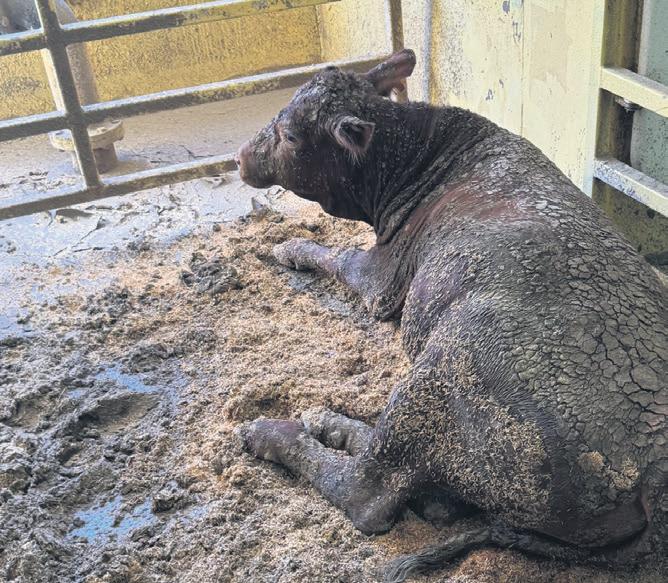
animal welfare on long and complicated journeys.”
Former Chief Veterinary Officer Helen Beattie says the trade condemns more than 120,000 animals per year to the suffering caused by long sea journeys and life [and slaughter] in poorly regulated destinations.
The Government’s primary argument is that the trade is potentially worth hundreds of millions to exporters. In reality, live animal
exports are a means for a few large players to profit at the expense of animal suffering, our values, and our reputation.
Pro-live export interests have bank-rolled a million-dollar lobbying campaign to push Luxon to reinstate live exports, but the Prime Minister must decide to take a principled view: keep the ban in place and stop any
6 May 2024 CANTERBURY FARMING FARMING NEWS
backtrack
welfare
raised on our shores.
own excrement
SPCA
boarded
live animal ship in Cape Town. Editor’s note: Canterbury Farming has received a number of images from this shipment from the South african SPCa and this is the only one we felt was suitable for publication, the others were too graphic — Editor.
on
standards for animals
Trading in misery: a cow lies in its
after being discovered by South african
officials who
a









Some gains despite a tough earnings season
Global financial markets have had a good start to 2024, with many major stock markets reaching new highs. The MSCI All Country World Index (ACWI), the United States S&P 500 index, Japan’s Nikkei 225 index, and Australia’s ASX 200 all reached new records.
] with andrew Wyllie
] Forsyth Barr
The strong performance worldwide has been driven by gains in the US and Japanese stock markets. US companies have benefited from positive consumer demand, a still solid US economy, and on-going enthusiasm about the potential for Artificial Intelligence (AI) technology.
The Australian equity market has seen a bit more positivity since the start of the year, although gains have been more muted than other international markets.
New Zealand market update
While the US and a few other markets have done well, not every market has been as upbeat. The NZX50 remains well below the peak it saw back in 2021.
However, the local market has made modest gains over the past three months. The latest financial reporting season from New Zealand companies was disappointing, falling short of already low expectations. Many
of these companies blamed higher interest rates for reducing demand, especially in retail.
Despite the gloomy earnings reports, overall business confidence surveys (which include non-listed companies) have been relatively positive, which could indicate a brighter outlook for firms ahead.
New Zealand economy update
The New Zealand economy was softer than expected, shrinking 0.1% over the December 2023 quarter and falling 0.3% year-on-year, a very weak performance.
Our economy has been propped up by very strong levels of population growth. Adjusting for population gains, the economy has been contracting on a per capita basis since the end of 2022. Looking ahead to 2024, we are likely to be in for a bit of a bumpy ride.
Consumer confidence has taken a hit after several months of improvement. This isn’t surprising, considering the still-high interest rates and cooling job market.
Most analysts expect to see interest rate cuts from the Reserve Bank of New Zealand

(RBNZ) by the end of this year. This could provide some support for those with borrowings as the cost of debt starts to fall. But on the flip side, for those with term deposits, lower interest rates could reduce the level of returns for money sitting in the bank.
Playing the long game
So far 2024 has been reasonably kind to investors. The global economy is holding up pretty well for this point in the economic cycle, but geopolitical risks remain simmering away in the background.
The US election coming into focus could see some market nerves heading into voting day in November. Minor pullbacks or breathers in market momentum are normal, as in fact are larger downturns. What matters most is staying focussed on the long game.
While big name technology stocks have put in strong gains, many other areas of markets have yet to see the same action, giving room for further upside in coming years.
‘
What matters most is staying focussed on the long game.
This article was prepared as at 31 March 2024 and provides market commentary for the three-month period ending on that date. To discuss your investment options please contact andrew Wyllie, who is an Investment adviser and is Forsyth Barr’s Christchurch Branch Manager. He can be contacted regarding portfolio management, fixed interest, or share investments on 0800 367 227 or andrew.wyllie@forsythbarr.co.nz. This column is general in nature, has been prepared in good faith based on information obtained from sources believed to be reliable and accurate, and should not be regarded as financial advice.




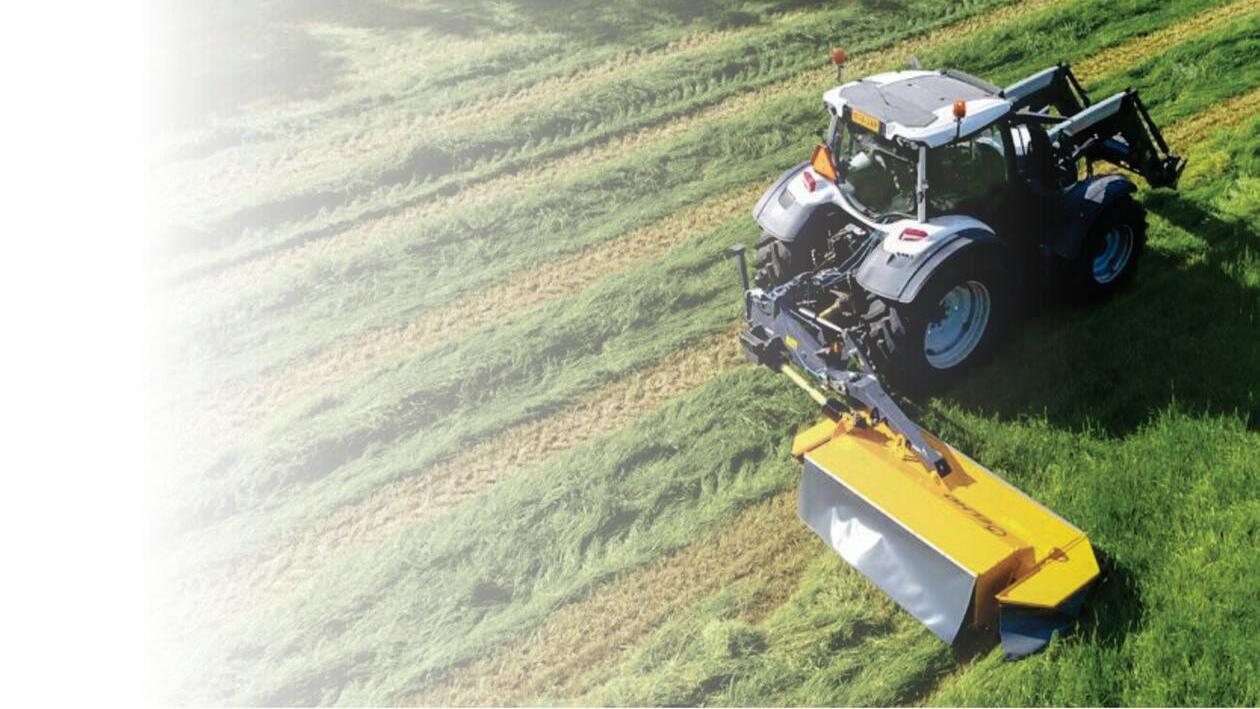
CANTERBURY FARMING May 2024 7 RURAL PROFESSIONALS Looking at off-farm investments?
you are thinking about your investment options, talk to Forsyth Barr
get personalised investment advice and portfolio management specific to your investing needs, talk to Investment Adviser Andrew Wyllie in confidence on (03) 365 4244 or email andrew.wyllie@forsythbarr.co.nz CHC6189-02March 2021 0800 726 724 www.scorch.co.nz Terrestrial Wireless ADSL Fibre VoIP RBI GET CONNECTED WITH Scorch Broadband SCORCH COMMUNICATIONS
When
To




] with Tyler Burgess ] Helmores Lawyers

Understanding the Worker Protection Act
in the timeframe is an infringement offence which can result in the Labour Inspector:



The Worker Protection (Migrant and Other Employees) Act 2023 (Act) came into force on 6 January 2024.
The Act has the effect of making some changes to the Employment Relations Act 2000 (ERA), the Immigration Act 2009 (Immigration Act), and the Companies Act 1993.
While on first glance the Act appears to apply mostly (or wholly) to migrant workers, this is actually not the case. The Act applies to all employees (or perhaps more correctly, all employers) in New Zealand.
In terms of the ERA, the changes revolve around imposing stricter duties on employers keeping and providing certain records, wider powers are given to Labour Inspectors, and harsher penalties are imposed for non-compliance. For example:
While a Labour Inspector already has the power to request a number of different records from an employer (relating to an employee and their employment), an employer must now provide those records within 10 working days of being asked for them.
Failure of an employer to supply the Labour Inspector with the required records with-

• issuing an infringement notice and a fee of $1,000 per offence, up to a maximum of $20,000 in infringement fees in a 3-month period, or
• seeking a penalty at the Employment Relations Authority for each breach, of up to $10,000 for an individual or $20,000 against a company or corporate body.
In terms of the Immigration Act, the changes relate to, again, imposing stricter duties on employers (with regards to keeping and providing certain records) and the introduction of a number of new infringement offences under the Immigration Act, for example: An immigration officer now has even wider powers to investigate whether a migrant worker is being exploited, including powers very similar to a Labour Inspector as described above.
Three new immigration infringement offences have been implemented. These are:
• allowing a person who is not entitled under the Immigration Act to work in the employer’s service to do that work;

• a person in a manner that is inconsistent with a work-related condition of that person’s visa;
• failing to comply with a requirement to supply documents within ten working days.
Additionally, the Chief Executive of the Ministry of Business Innovation and Employment now has the power to publish the names of employers who breach their obligations under the Immigration Act.
In addition to the above, the Act also allows people convicted of migrant exploitation or people trafficking to be disqualified from managing or directing a company.
This is to ensure that persons who use corporate structures to avoid consequences and detection when exploiting migrant employees will no longer be able to do so in that capacity and is intended to help prevent that kind of offending from reoccurring.
The reality is that the Act imposes stricter obligations and duties on Employers to keep records relating to all employee’s employment, and to provide same on demand.
The Act also aims to make the exploitation of migrant workers harder to conceal the penalties for not complying with the ERA and the Immigrations Act, (as it relates to employment), have been reinforced.






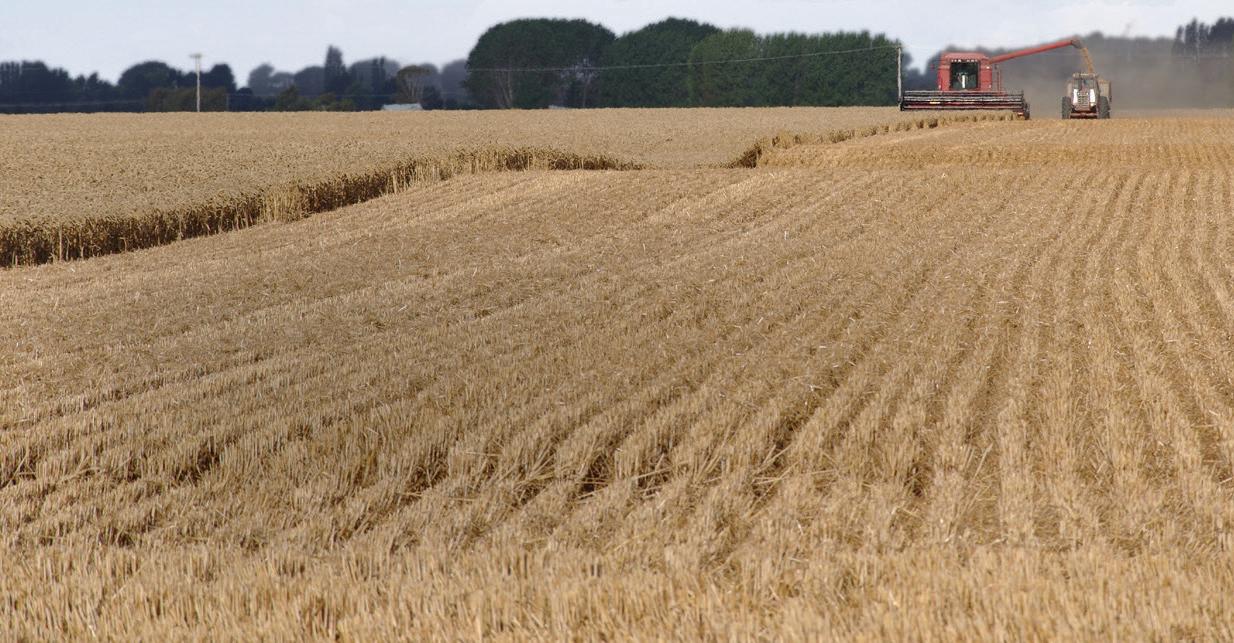
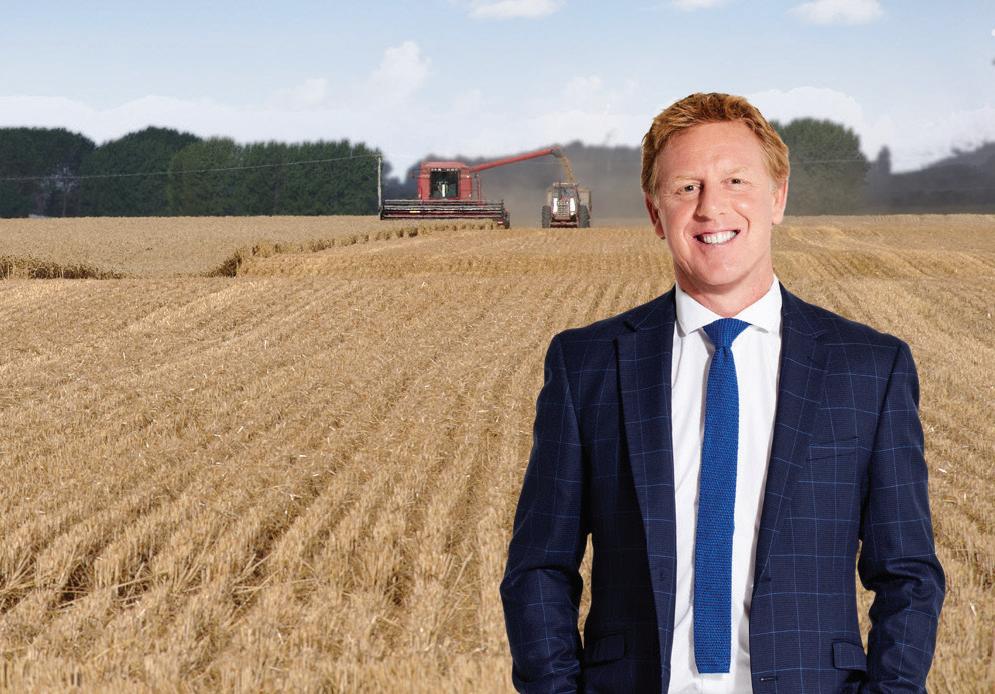


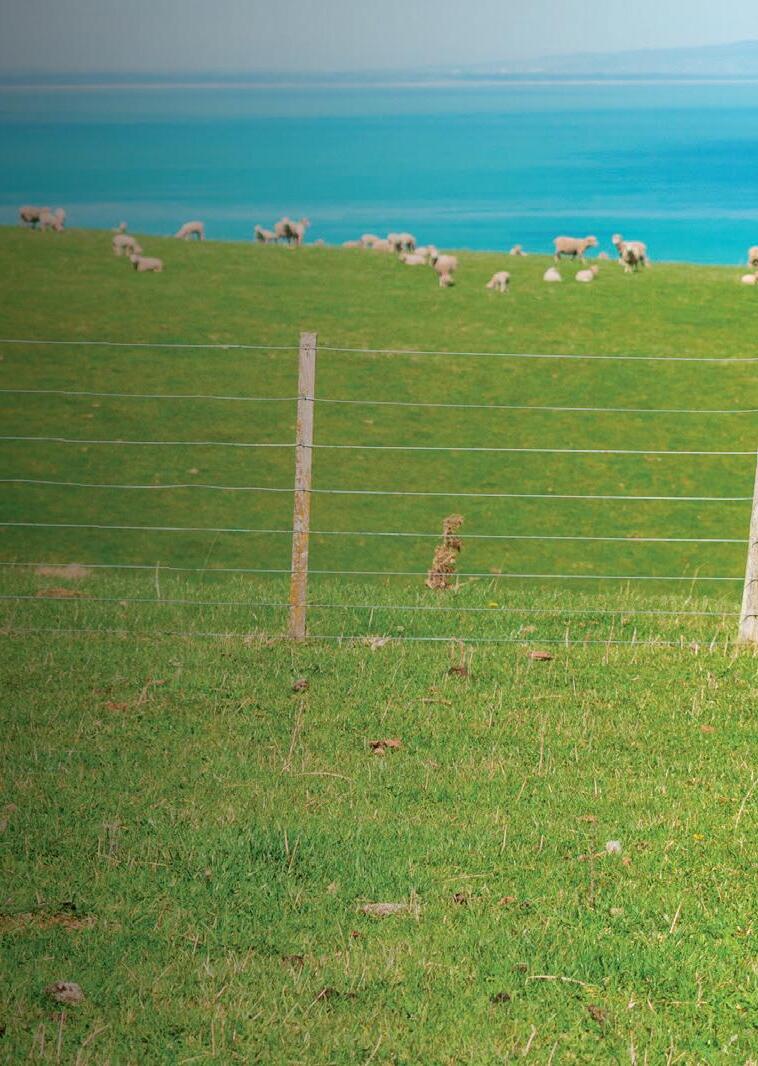






8 May 2024 CANTERBURY FARMING RURAL PROFESSIONALS Is farm subdivision on your horizon? Call us now for great subdivision advice. Call 0800 787 775 for a chat hello@survusrural.co.nz www.survusrural.co.nz 9 Good Street, Rangiora 03 311 8008 www.helmores.nz email@helmores.nz PROFESSIONAL RURAL REAL ESTATE ADVICE Residential / Commercial / Rural / Lifestyle Ben Turner 027 530 1400 03 375 4736 ben.turner@bayleys.co.nz WHALAN & PARTNERS LTD, BAYLEYS, LICENSED UNDER THE REA ACT 2008 Call Ben today for an altogether better approach to your rural real estate needs along with an up-to-date market overview.


Dealing with stress
Awareness is key. The earlier you recognise the signs of unhealthy stress the better you’ll be able to manage them.
] Article supplied by Farmstrong
How do you manage unhealthy stress?
Recovery periods are vital. Daily and weekly ‘down time’ is important as well as taking a holiday after really busy times.
Secondly, come up with a plan. Instead of trying to do everything, it’s about asking yourself what are the one or two top things I need to work on right now? Focus on them and park everything else. Once you’re feeling back in charge and your stress levels go down, some of the other issues bugging you may disappear.
A way to cope with lots of demands is by reducing or delegating them to others.
At what point would you consider it more than just ‘calving stress’ and be seeking help?
A general rule of thumb that a person is under unhealthy stress, is when their daily functioning and relationships are being impacted. For example, if the person doesn’t seem themselves and shows ongoing changes in their normal behaviour and thinking patterns.
When we just keep going without a break from the ongoing physical or mental demands we are facing, our body finds it hard to keep up and the cracks begin to show.
A catch-up with your GP, a local counsellor, Rural Support Trust worker or supportive friend, can give you some ideas or a plan to get things back on track.
What is burnout and how do you know if you’ve got it?
Burnout is essentially your body hitting the wall and saying, “I’ve had it. You should’ve given me a break and you haven’t.” Your body is letting you know that it’s mentally and physically exhausted.
Signs include:
• low energy and motivation to do even normal everyday tasks
• severe irritability where little things become highly frustrating
• losing your temper easily and often
• inefficiently tackling and completing tasks
• feeling ineffective and that you’re not accomplishing enough.



If some of these look familiar to you, then you may be experiencing burnout or heading towards it.
How do you prevent burnout?
When people are under pressure the things that disappear are often the things that keep us well and prevent us getting burnt out. Continue to:
• socialise with other people
• exercise regularly
• eat well
• continue to learn
• contribute to the community
• get off the farm and do something you enjoy with others.
Building in enjoyable activities is really important. Those are the things that give us more coping space and keep us feeling on top of things.
For more on how to maintain your mental health wellbeing on the farm go to: www.farmstrong.co.nz. Canterbury Farming thanks Farmstrong for being able to reproduce this article.






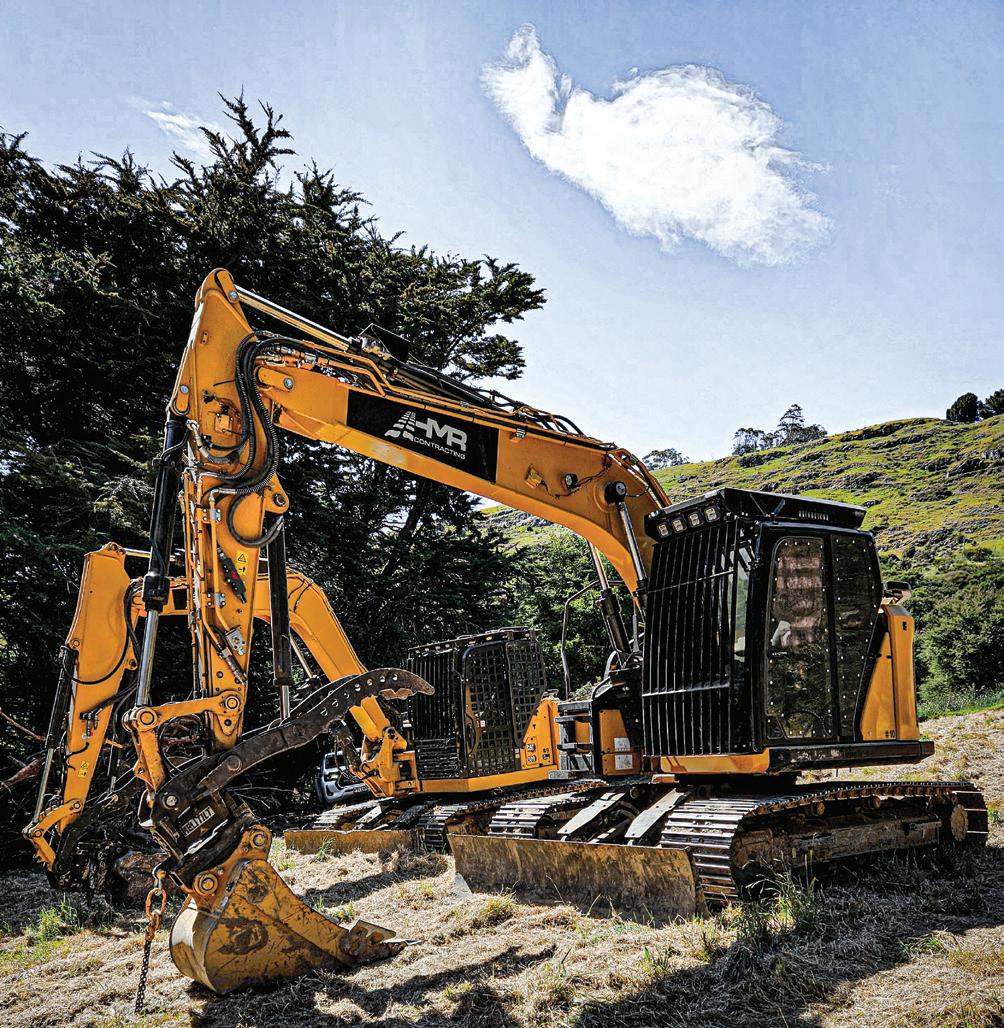

CANTERBURY FARMING May 2024 9 HEALTH ON THE FARM




10 May 2024 CANTERBURY FARMING Residential / Commercial / Rural / Property Services WINNER Located in North Canterbury, Claxby Estate was converted to dairy in 2012. At that time, Sam and Jo took the opportunity to install high-quality irrigation and other modern infrastructure, laying the foundation for them to farm more efficiently, and reducing their environmental footprint. The couple employ new technologies and farming methods to optimise their farming systems, with feed, water-use, genetics, soil and herbage all carefully tracked and managed. A key motivator at Claxby Estate is to do right by their cows, their staff and the environment. This shows why Sam and Jo are deserved winners of the Canterbury region’s Bayleys People in Primary Sector Award. Sam and Jo Spencer-Bower of Claxby Estate Ballance Farm Environment Awards Award Winners | Canterbury 2024 WHALAN AND PARTNERS LTD, BAYLEYS, LICENSED UNDER THE REA ACT 2008 Bayleys Ashburton 03 307 7377 Bayleys Christchurch City 03 375 4700 Bayleys Darfield 03 975 4559 Bayleys Hanmer Springs 03 315 7717 Bayleys Leeston 03 375 4700 Bayleys Methven 03 303 3093 Bayleys Rangiora 03 311 8020 Bayleys Rolleston 03 347 9949 Bayleys Timaru 03 687 1227 Bayleys People in Primary Sector Award HEALTH ON THE FARM



Getting access to boarding allowances
If your child lives in a remote area or faces other barriers to achieving at school you can apply for funding so that they can board away from home and focus on their studies.
] Information supplied by ] Ministry of Education
A boarding allowance is funding from the Ministry of Education so that your child can board away from home, either at a boarding school or a private boarding arrangement with someone who is not your child’s legal guardian.
There are two different types of boarding allowance, the access barrier and the multiple barrier.
The one mostly commonly accessed by rural families is the access barrier allowance which is for students who live too far away from an appropriate school and the Ministry’s school transport does not provide a solution.
The multiple barriers allowance is where a student experiences difficulties in their life that makes it hard to go to school or do well at school. The allowance might not cover all of your child’s boarding fees. If it doesn’t you have to pay the rest yourself.
The boarding allowance continues for as long as the student is at school, or until the barriers they are facing no longer exist.
If your child goes to a boarding school the allowance is paid directly to the school at the beginning of each term.
If your child is boarding privately, it is paid

directly to the school at the beginning of each term. The person providing the board needs to arrange to receive their payment from the school.
Is my child eligible for an access barrier allowance?
Your child is eligible if they live too far away from an appropriate school and the Ministry’s school transport assistance programme does not provide a solution.
“Too far away” is defined as living an unreasonable distance from the nearest appropriate school (eg more than 60km) and:
• the closest school transport service to get to their nearest school is unreasonable (eg 20km), or,
• they have to travel longer than 60 minutes one way to their nearest school each day, or
• they have to drive an unreasonable distance (eg 60km) to the nearest school.
Support: Those living in remote areas are eligible for boarding allowance funding from the Ministry of Education to enable their children to attend the country’s boarding schools.
Can I choose which school my child goes to?
Yes. You can choose any state, state-integrated school, kura or private school. You will have to still have to meet the school’s usual enrolment and acceptance criteria, and there will need to be a space available in the boarding hostel.
For more information, visit www.education.govt.nz



CANTERBURY FARMING May 2024 11
Photo supplied by Nelson College




Students from Darfield and Ellesmere College Rural College attended Darfield High School’s inaugural Ag Expo recently.

Darfield High School’s Ag Expo provided students with a firsthand look at the varied range of businesses which support the region’s farming community.


Rural programmes at Darfield High School
Darfield High School is fortunate to be able to offer two Rural College Programmes.
]
Article supplied by
Darfield High School
Our Darfield High School Rural College Programme is open to all year 9 to 13 students, and currently we have over 200 students enrolled.
From Year 11, NCEA students are able to choose between Ag Science, Academic or Skills Programmes. Students are required to complete work experience in various Agricultural fields throughout the year as well as Practical on farm days.

Whereas the Tawera Rural College is a partnership with Primary ITO offering students from Darfield High School, Rolleston College and Haeata Community College, this is a two-year programme for year 11 and 12 students, focused on work based training.
Following a very successful first year in 2023, we are now into our second year, with two classes running concurrently. We are extremely grateful to local businesses and organisations as well as farmers who support our Rural Programmes.
Recently we held our first Ag Expo. The purpose of this day was to provide our students with a firsthand look at the varied range of businesses which support our farming community, with the idea of offering pathways for our students into their fields.
We also openly welcomed Ellesmere College Rural College students and staff.
The event was a great success, we were delighted with the number of businesses and organisations who supported our event, and it was great to have quite a number of Darfield High School Alumni
who work within these businesses support our event. By participating in our Ag Expo, they had the opportunity to showcase their services and engage directly with our students.
Students conversed with each business and took part in interactive activities, testing their knowledge and skill.
Plans are already in place for a bigger, better event in 2025, opening it up to more Agricultural Businesses and Organisation and also inviting other Schools with Rural College Programmes.
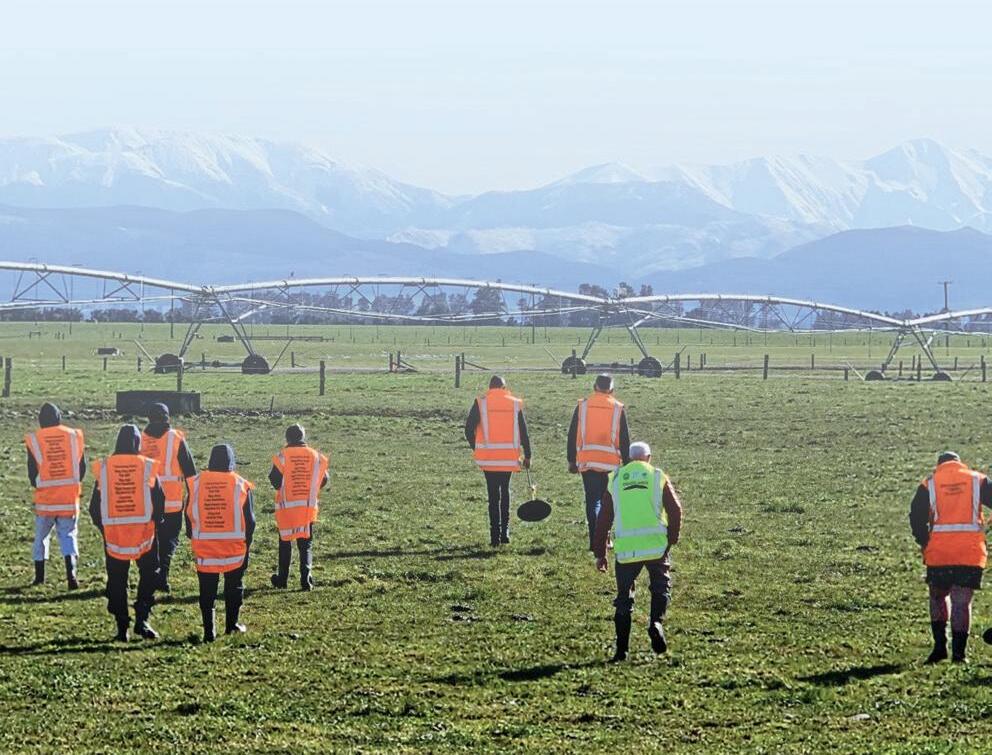



12 May 2024 CANTERBURY FARMING
]



Moving Day can be stressful
When moving farms and animals there is the normal household administration that needs to be done as well as a raft of regulatory requirements around your animal and environmental responsibilities.
] Article supplied by DairyNZ
Working through lists is a handy way of ensuring you don’t let something slip that could cost you time and/or money in the future.
Regulatory requirements
• Complete ASD and NAIT requirements
• Finalise critical record keeping for onfarm records: Nitrogen pages, Dairy diary; Milk volumes and SCC; Animal health records.
• Understand new resource consent management requirements of new property (e.g. recording monthly water use, completing compliance forms for environment).
• Walk over your new farm (again) taking note of any risks or hazards and ensure they are noted and included in your risk assessment plan.
• Update farm policies and procedures for new farm. Ones that are especially important to complete early are: Emergency plan; Farm rules; Map of the farm identifying risk and no-go or limited-go zones; Risk assessment – what are the key risks and how will you manage them; How your farm team will communicate, including about health, safety and wellbeing; Maintenance register.
• Update / complete contractor coordination forms (which should include contact
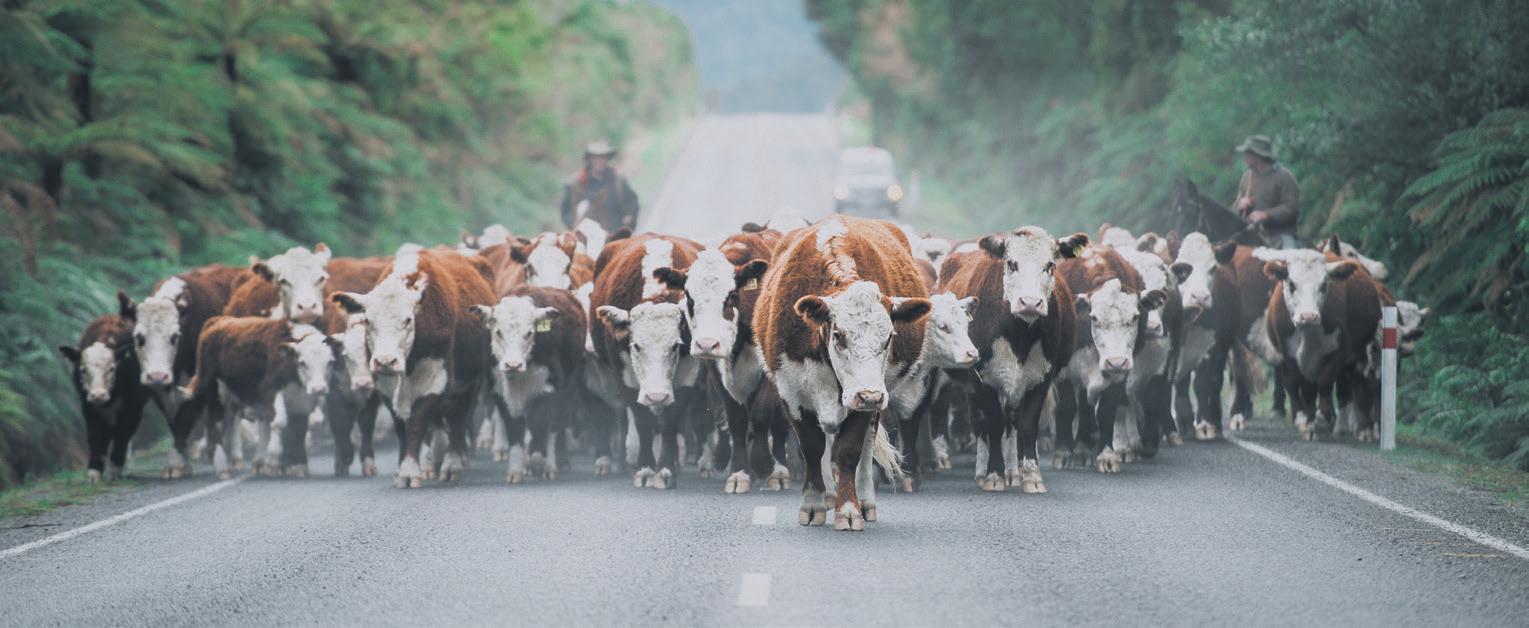
details, a summary of any risks unique to your farm, your expectations before coming onto your property and confirmation you will work together to assess and reduce health and safety risks of any tasks they undertake for you).
• Ensure you have appropriate warrants and registrations for all vehicles.
On the farm
• Obtain or update insurance to consider:





New vat size; New plant and machinery purchased; Any further requirements with new contract.
• Take and record final power meter readings at the shed (Take a photo)
• Finalise and/or update agricultural supplier accounts (e.g. FarmSource, Farmlands, PGG)
• Complete change of contact details for all suppliers, processors, businesses you hold accounts with
Tips and tricks
• Start early. Admin always takes three times longer than you expect.
• If you haven’t had good policies and procedures ask other farmers for ideas and possibly copies of their own ones. It is usually much easier to start with some ideas than from scratch.
• Ask a friend who has moved recently to check if you’ve forgotten anything.





CANTERBURY FARMING May 2024 13


LET US FILL IN YOUR
PIVOT RUTS
It’s always about preventative maintenance when dealing with Pivot Ruts.

Ruts Plus pivot rut filling machines penetrate through the grass and soil cutting out the sidewalls of the pivot rut, pulling in sods of the already established grass root structure planting it back into the pivot rut. The farmer then follows behind wheel packing the windrowed material, with their own tractor. Leaving no depressions or bare grass on either side of the wheel track, all without bringing in extra material.
Condensed root structure increases the soils weight holding capacity. Once compacted it then combines together to create a solid mass. The grass continues growing and will no longer hold water the same as it did before. Here is an example: If you drove into a wet fully worked up paddock you

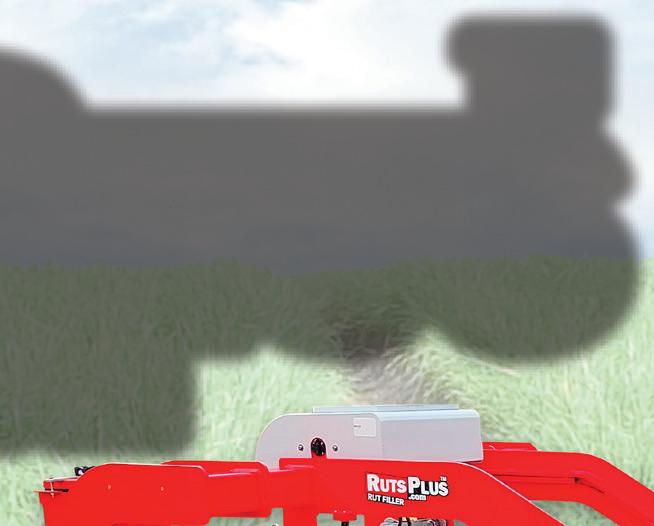




would simply sink up to your axles, yet if you drove into the same wet paddock with established grass you wouldn’t have a problem driving around on it.
Ruts Plus have clearly proven after years of development to have the answer to pivot rut problems by transplanting the already established grass root structure back into the pivot rut. Not only ending up with extra grass but the grass also helps to absorb water. As we all know traditional costs of filling in pivot ruts with foreign material over the years have been skyrocketing. Our system provides immediate results with very little time and expense to the farmer by simply following around the wheel tracks filling in any depressions that could hold water. Ruts Plus are currently operating four machines, each pivot rut filler can typically fill in up to fifty/sixty hectares per day.
Set hourly rate with a one off travel cost of $75 per machine anywhere in Canterbury. Prices usually range from $20 to $35 per hectare depending on conditions.



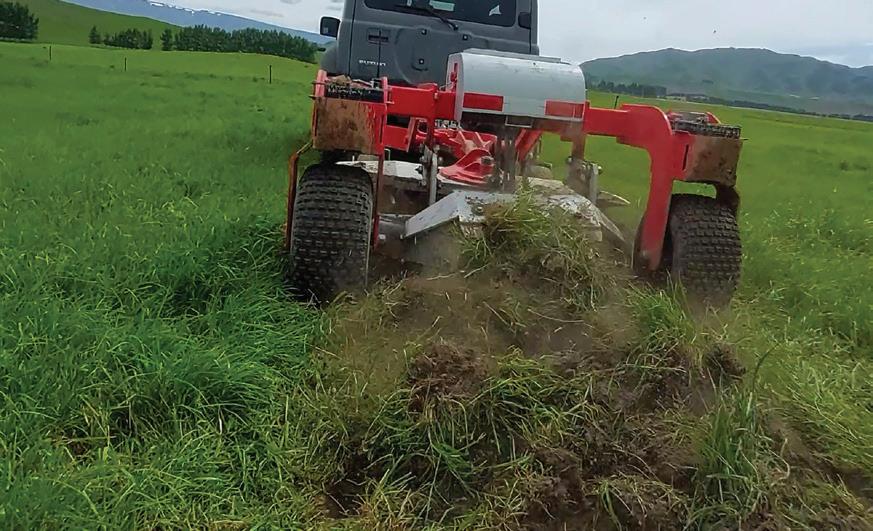




DAIRY LANE UNDER FENCE RETRIEVING





Up to 90% cheaper, quicker and better than traditional methods.
Covering as much as 2km of fenceline per hour, depending on conditions.
Dairy farmers are quickly realising the true value of our system due to the speed, quality of the job & the price.
We have four custom made machines removing material from under dairy lane fences using the most efficient way possible. Our advanced blade system allows it to reach further under the fence wire as well as deflect around the posts by either windrowing the material into the



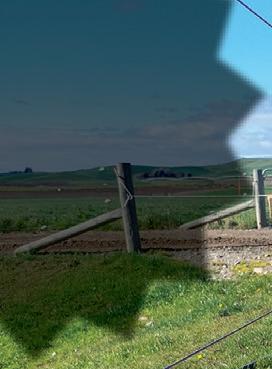






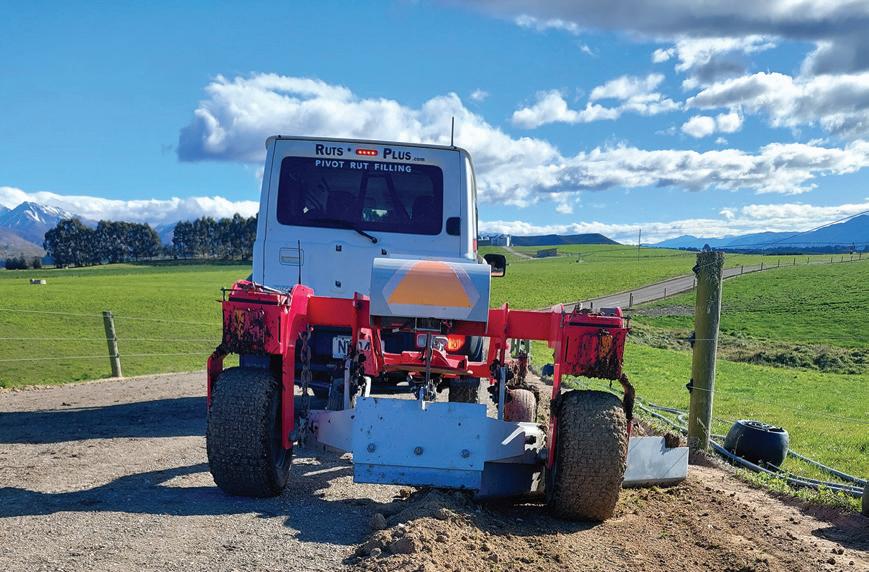

lane ready for the farmer to organise it to be picked up or we simply spread it out. Set hourly rate with a one off travel cost of $75 per machine anywhere in Canterbury.


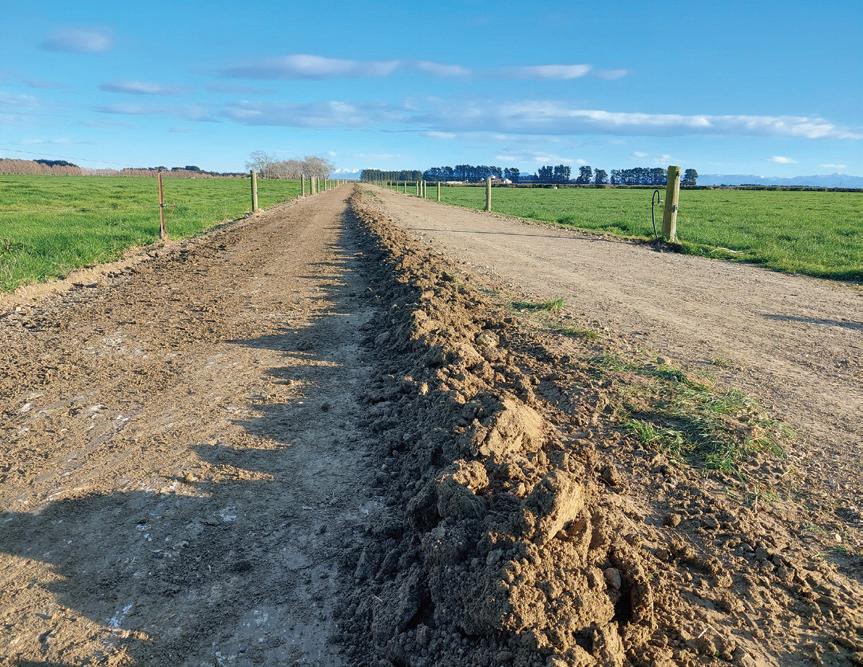





14 May 2024 CANTERBURY FARMING
Pulling in the shoulder
Thinly spreading out the material
Windrowed plus tidied up the lane surface
Before
CANTERBURY WIDE
Transplanting the grass root structure back into the pivot rut.
Compacted by the farmer



Ruts Plus pivot rut filling services
Ruts Plus Contracting is one of the country’s leading pivot rut filling companies, covering the whole of Canterbury.
] Article supplied by Ruts Plus Contracting
Utilizing the farms own soil and plant material, so there is no need to spend a fortune on bringing in extra material.
The company’s pivot rut filling machines penetrate through the grass and soil cutting out the sidewalls of the pivot rut, pulling in sods of the already established grass root structure and planting it back into the pivot rut.
Ruts Plus have clearly proven after years of development to have the answer to pivot rut problems by transplanting the already established grass root structure back into the pivot rut, not only ending up with extra grass but the grass also helps to absorb water.
Here is an example: If you drove into a wet worked up paddock you would simply sink up to your axles, yet if you drove into the same wet paddock with established grass, you wouldn’t have a problem driving around on it.
Condensed root structure increases the soils weight holding capacity. Once compacted it then combines together to create a solid mass. The grass continues growing and will no longer hold water the same as it did before.
As we all know the cost of filling in pivot ruts with foreign material over the years has been sky-
rocketing. So, the Ruts Plus system provides immediate results with very little time and expense to the farmer by simply following around the wheel tracks filling in any depressions that could hold water.
Based near Ashburton Ruts Plus are currently operating four machines around Canterbury and each pivot rut filler can fill in up to 60 hectares per day.
Another service which Ruts Plus can provide to Canterbury farmers is under fence dairy lane maintenance. Machines remove material from under dairy lane fences using the most efficient way possible, either windrowing the material into the lane ready for the farmer to pick it up or simply spreading it out.
Having the most advanced blade system available allows machines to reach further under the fence wire as well as deflect around the posts.
Ruts Plus is a contracting business and has designed and built its machines to suit its customers’ needs.
For more information on pivot rut filling or under fence dairy lane maintenance contact Rodger Smaill on 022 372 3586, email: info@rutsplus.co.nz or visit their website: www. rutsplus.com
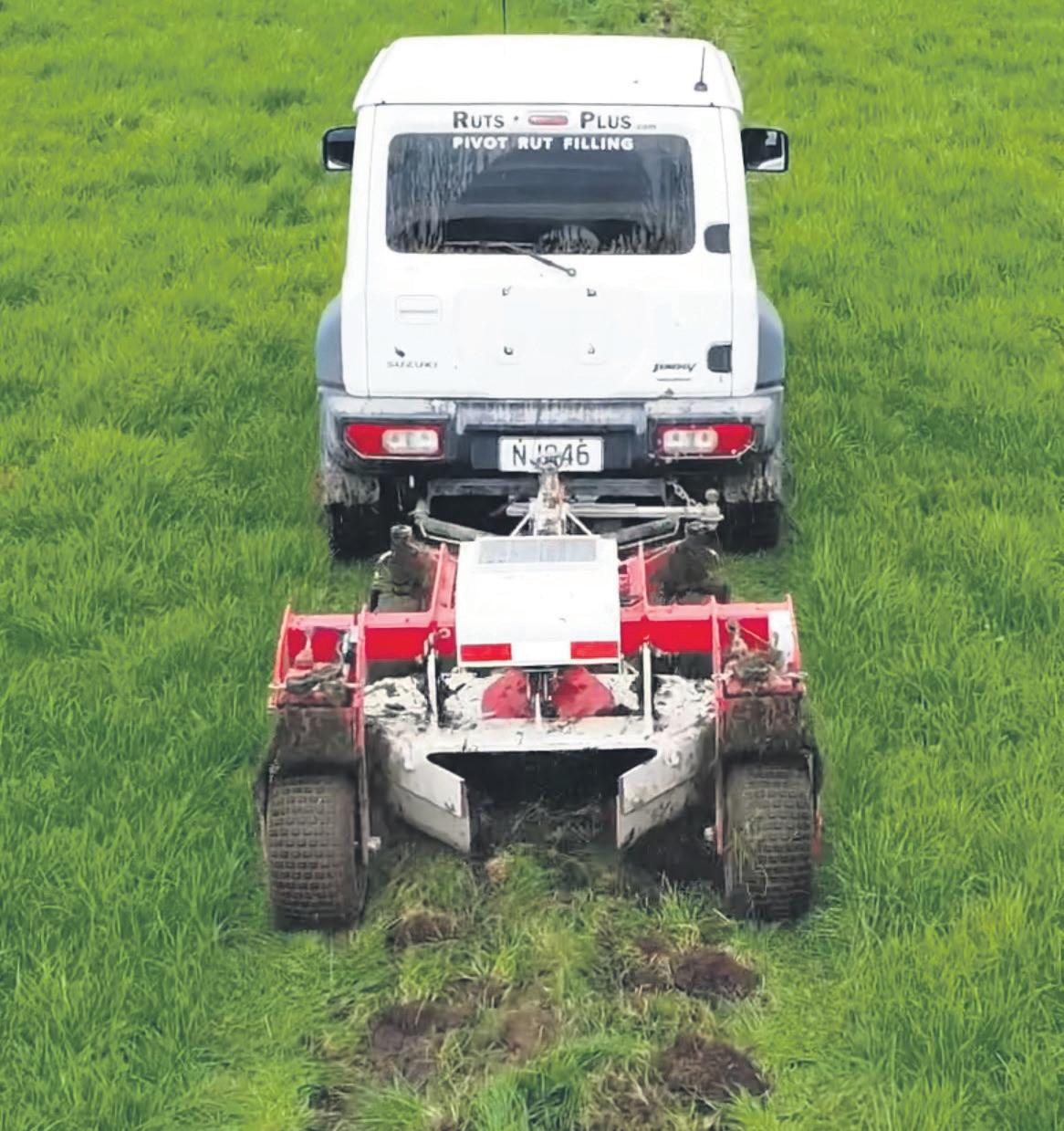






CANTERBURY FARMING May 2024 15
Ruts Plus Contracting designs and builds its own machines to suit its customers’ needs.

16 May 2024 CANTERBURY FARMING






] with Peter Burton

Not always an app available
“Just give me the app” is not an uncommon response when we talk to farmers and farm managers about pasture management.
We would if we could but that’s not possible. The upside is that there are some things which will always remain exclusive to people.
In this case it’s all about regular observation, the one thing that separates really successful farming and growing operations from the run-of-mill.
Being in the top 5% of operators is a real plus because those operations make money every season regardless of market returns and climatic conditions.
In fact, some of the people we’ve worked with continuously for over the last twenty years have, out of income, repaid large amounts of debt and been in a situation where they have been able to expand.
The problems of high empty rates, 20% annual pasture renewal, chronic metabolic issues, weed along with clover flea and weevil infestation, just aren’t topics that come up in conversation because they don’t exist. When the conditions that favour clover are created and pasture management allows it to fully express itself, clover becomes genuinely unstoppable.
And because it is less competitive for moisture, nutrient, and sunlight than grasses, where it flourishes higher fertility grasses and herbs steadily increase.
Management of pastures to obtain maximum performance is where most attention is required.
When working with those that have only known the fixed grazing routine followed by regular synthetic nitrogen applications put-

ting extra time and effort into observation makes little sense.
That is until the benefits of stronger pasture growth particularly during periods of less-than-ideal grazing conditions become apparent.
This is quickly followed by an improvement in weight gain and milk yield along with a reduction in overall animal health costs.
The financial margins in farming currently are slim, and although better times will arrive it is still possible to generate a healthy profit, but attention to detail is necessary.
Grazing intervals, often referred to as ro-


tation length, is the critical issue in turning 12,000kg of dry matter per hectare into 15,000kg or better.
That extra 25% is available at no extra cost apart from the time taken to closely observe the pasture in every paddock prior to and after grazing.
The importance of that is that when pasture production does not exceed 10,000kgDM/ha each year it is usually almost impossible to generate a profit regardless of debt levels.
Functional Farming Systems have for over twenty

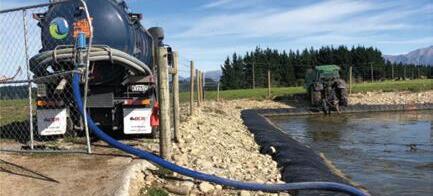

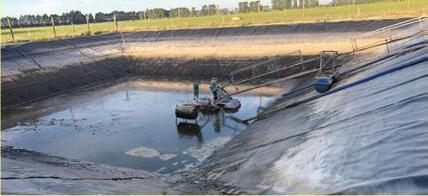
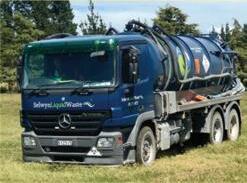
years provided farmers with soil fertility packages that are not reliant on synthetic nitrogen for exceptional performance.
It quickly became apparent that some operators realised the benefits more quickly than others and they were those that spent extra time and effort managing their pastures.
It is under permanent grazed pasture that carbon is most rapidly sequestered, a fact not recognised in current farming models which will have to change if NZ’s pastoral industry is to prosper.
Where carbon is steadily sequestered methane and nitrous oxide are not increased. Carbon dioxide being heavier than air sits close to the ground stimulating stronger plant growth.
Extra carbon when fully digested provides the perfect filter for rain ensuring ground water is fit for drinking, and it is only soil biology that allows excess nitrogen to be returned to the atmosphere as benign nitrogen gas.
It’s essential if farming is to survive the coming financial turbulence that we take heed of the past. From Soils and Manures in New Zealand (1960) by L.J. Wild comes the following.
“In agriculture, as in other callings, that man is more likely to succeed whose mind is well stored with solid facts, and whose fertile brain is productive of ideas, than he who blindly follows ‘rules of thumb.”
For more information call Peter on 0800 843 809.
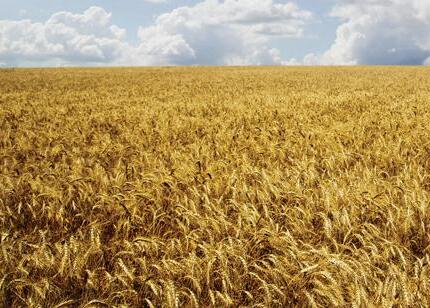

CANTERBURY FARMING May 2024 17 Golden Bay Dolomite NZ’s most loved magnesium. call 0800 436 566 or visit www.dolomite.co.nz DAIRY MOVING DAY Electrical problems or maintenance? Use our unrivalled industrial electrical service for: • Dairy sheds and irrigation • Power reticulation • Effluent control • Dryers, conveyors and generators • Switchboards and central supplies North Canterbury 03 313 6104 Leeston 03 324 3752 Nairn Electrical, proudly supporting rural Canterbury since 1975. www.nairnelectrical.co.nz 7 day breakdown service
Flourishing: When the conditions that favour clover are created and pasture management allows it to fully express itself, clover becomes genuinely unstoppable.



Westland delivers strong profit result
] by Kent Caddick
Westland Milk Products has delivered a strong profit result for the second successive year.
Westland has announced an after-tax profit of $55.9million for 2023, more than double a targeted $20 million annual return. The 2023 profit is above 2022’s $38.9 million record-breaking result, a $120 million rebound on 2021.
Westland CEO Richard Wyeth said the company would maintain its push towards long-term profitability by continuing to divert more milk solids into higher-value products in 2024.
Westland recently committed to pay farmers the 10c premium above Fonterra’s Farm Gate Milk Price for the 2024-25 and 202526 seasons, extending and improving on payment terms made under the original Scheme of Arrangement when the company was purchased.
“We’re proud of this result but we know we still have plenty of room for improvement,’’ Wyeth said.
“We’re tracking well to deliver on our fiveyear commitment to build sustainable growth year on year. A sustainable financial base means we can continue to offer farmers very competitive terms for their milk.’’
He said revenue of $1.065 billion was slightly above last year’s result and very pleasing given the fall in global dairy prices.
“The advantage we have of course is the backing of one of the world’s largest dairy companies in Yili,’’ Wyeth said.
“Yili’s support has enabled us to invest heavily in infrastructure that will maximise revenue from high-margin products. But our ability to remain competitive on milk prices must rely on our ability to stand alone on financial performance.’’
A $70 million investment in a new lactoferrin plant at the company’s Hokitika plant supported by Yili is expected to continue to reduce reliance on traditional high-margin revenue sources such as infant formula for China, as import demand in that sector continues to soften.
Due for completion in the final quarter of 2024, first production at the plant will take place in quarter three. Commercial production is expected by the final quarter this year.
Wyeth said a $40 million investment in a new butter plant at Hokitika in 2022 had allowed Westland to expand strongly in the US market.
“Westgold butter is now stocked in more than 3000 grocery retail outlets in the US, including Walmart stores. Westland also produces Kirkland Signature New Zealand Grass-Fed Butter for Costco.”
Costco reported in their 2022/23 financial results that Kirkland butter sales in-

creased more than 160% year on year and continue to show strong growth.
The Westland-produced butter is now stocked in almost every Costco store in
the United States, as well as Costco global stores, including Korea, Taiwan and New Zealand, with more international regions in the pipeline.
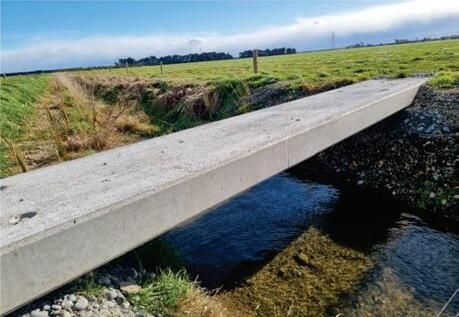










18 May 2024 CANTERBURY FARMING CALL WARREN 0272 502 502 | 03 308 4039 1 Range Street, Ashburton www.ashcon.co.nz LOOKING FOR A FRESH LANEWAY SOLUTION Specialists in constructing and capping dairy lanes.
the end of the day, it’s about giving the herd the best surface to walk on & reducing the number of lame animals.”
prioritize excellence and ensuring our
are
on
RURAL_Laneways_Canterbury-Farming_March-2024.indd 1 22/02/2024 22:15
Driveways • Earthquake Repairs
New Home Specialists
Patios & Paths
“At
We
customers
satisfied, rather than simply focusing
price.
•
•
•
Forward thinking: Westland Milk Products CEO Richard Wyeth says the company will maintain its push towards long-term profitability by continuing to divert more milk solids into higher-value products in 2024.



Market lifts but interest costs still high
DairyNZ’s Econ Tracker shows a forecast seasonal closing position ahead of early-season predictions, though caution exists for farmers going forward.
] by Kent Caddick
The latest Econ Tracker update also provides the new forecast for the 2024/25 season.
DairyNZ Head of Economics, Mark Storey, said it was positive to see that the outlook for the current season has improved, especially when compared to forecasts only six months ago.
“Revenue projections have improved largely due to better results at the global dairy auction, along with Fonterra’s adjusted projected payout for the season,” Storey said.
“We have also seen relatively significant price decreases for feed and fertiliser, bringing these more in line with historical averages, reducing on-farm costs.
“While this is positive, we are seeing interest costs becoming one of the most significant costs for farmers this season.
“The Reserve Bank signalled slowed reductions to the official cash rate, meaning interest rates are now likely to reduce more slowly and later than previously expected, which is a concern.”
When considering these changes, DairyNZ’s latest forecast data on the Econ Tracker shows the national breakeven forecast currently sits at $7.75 kg/MS. The breakeven milk price is the milk sale price per kilogram of milksolids to cover a farm’s costs in a season, excluding capital expenditure and principal repaid on loans.

This is below DairyNZ’s forecast average payout received of $8.12 kg/MS, which is based on the estimated milk receipts for the 2023/24 season and dairy company dividends.
“A positive difference between these numbers is good news and will likely bring further relief to many farms, especially when compared to forecasts mid to late last year which showed a negative situation for dairy farmers.”

Positive: DairyNZ’s Econ Tracker is showing a positive lift for dairy farmers but urges caution around interest costs.
Storey said looking ahead to next season, they see a marginal tightening of dairy farmer’s financial position, with less revenue forecast.
“We are not expecting feed and fertiliser costs to drop much further than they have
already done and while debt servicing may ease, it will likely remain at very high levels.”
The breakeven milk price for the 2024/25 season is forecast to sit at around $7.76 kg/MS, while the forecast payout received is $7.79 kg/MS.
“We are encouraging farmers to continue managing their budgets and costs, as they will likely experience limited operating profits, and many will likely still find it tight across many parts of the country.
“However, we know that dairy operates in a fluctuating economic environment, and therefore, the farm revenue and costs captured in the 2024/25 season forecast are subject to considerable uncertainty and can change quickly.”
Information in this article has been supplied by DairyNZ. The new forecasts are published on the DairyNZ Econ Tracker and expressed as a national average, which does not necessarily reflect individual farm situations. Farmers and rural professionals can use this tool to support informed decision-making when it comes to financial planning, forecasting, and budgeting. Farmers can contact their DairyNZ regional team, call 0800 4 DairyNZ, or go online to dairynz.co.nz/ business/budgeting for more tools, information, and advice.



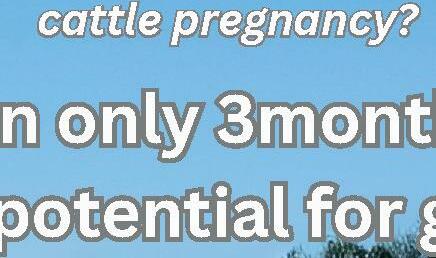



CANTERBURY FARMING May 2024 19 FRANCHISE OPPORTUNITY! Are you ready to join the leader in calf disbudding and foetal ageing in nd cattle pregnancy? Why chose Ultra-Scan? Trusted Reputation and Proven Business Model Exclusive Territory and Comprehensive Training Innovative Technology and Supportive Network Make $100k in only 3months plus HUGE future potential for growth! Ultra-Scan.co.nz 0508 858 727
Photo by DairyNZ



Unlocking support during dry times
The Government’s recent announcement of drought support for Canterbury is welcome and will in some way support those who are hardest hit.

 ] by Peter Scott
] Chair, Canterbury Regional Council
(Environment Canterbury)
] by Peter Scott
] Chair, Canterbury Regional Council
(Environment Canterbury)
The acknowledgment of the medium-scale adverse event unlocks financial support, including tax relief, and enables the Ministry of Social Development to consider Rural Assistance Payments.
However, it’s also brought to light many of the pressures that rural communities across our region are facing right now, including in my own neighbourhood.
While many farmers have management practices in place to help deal with drought, the impacts are being exacerbated by high costs and interest rates, a subdued market
(particularly for red meat), and the on-going uncertainty around where central Government policy decisions will land. The added pressure of drought could see some sheep and beef farmers poised to make a significant financial loss.
Many farmers are already working through their supplementary feed supplies. While April’s rain dump was helpful to some extent, it won’t do much for growth as we move towards winter’s cooler temperatures.
I have several friends who are in the thick of these challenges, and from my own farming days, I understand firsthand the pressures that are there.
With droughts set to become more prevalent in the future, it raises questions around water infrastructure and our ability to keep livestock safe and earn a living through these dry periods.
I believe we, as communities, need to start thinking about better water security in terms of distribution, storage, and management. This type of water resilience is a topic I plan to raise with Ministers when I get the opportunity.
During these tough times, I’d like to acknowledge the work that Rural Support Trust is doing to help farmers navigate such issues. Their knowledge and networks can help in all sorts of situations, and I encourage anyone who needs a bit of a ‘lift’ to reach out to them.

Our own Council staff are also here to help. The Farmers’ Hub section of our website is a good place for information, support and advice.
You can also sign up to our monthly Rural Matters newsletter through ecan.govt.nz/
rural-matters. It has useful information specific to the rural community and farming operations.
as always, please feel free to contact me. Email me at councillor.scott@ecan.govt.nz
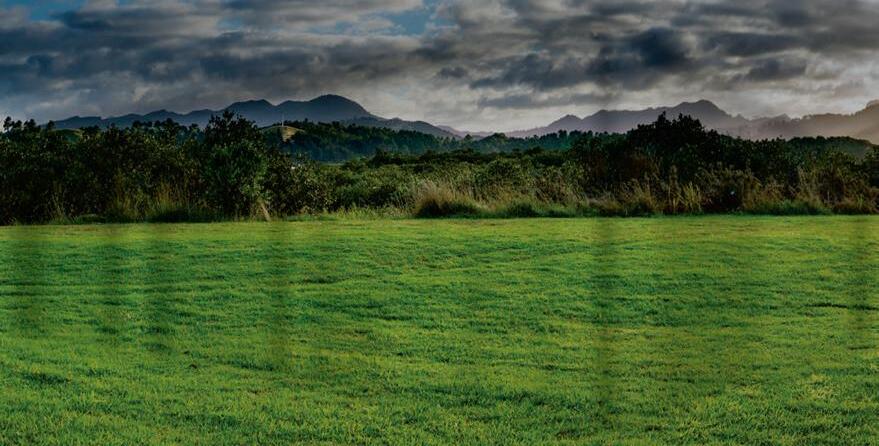


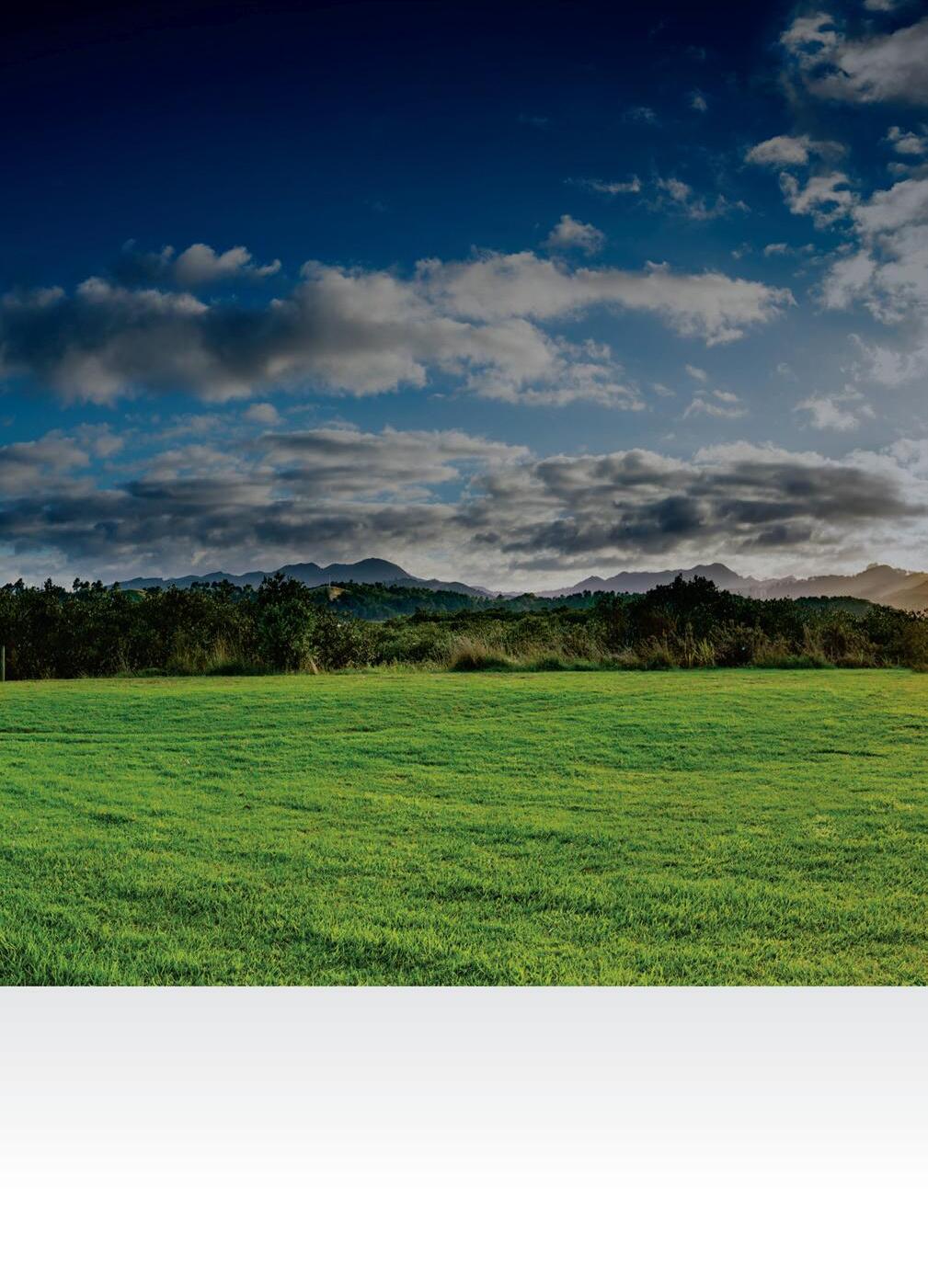





20 May 2024 CANTERBURY FARMING
]



Enhancing herd health and productivity
In the dynamic world of dairy farming, the well-being and productivity of your herd are paramount.
] Advertorial supplied by CP Lime CP Lime Solution’s Vitalise pelletised mineral supplements offers a comprehensive approach to supporting dairy cow health and performance. Let’s explore the key benefits of integrating Vitalise into your herd management practices.
Vitalise is meticulously formulated to provide dairy cows with a balanced blend of essential minerals and nutrients tailored to their specific needs.
From calcium and magnesium for muscle function and lactation support, to phosphorus, sulphur, sodium, biotin and trace elements.
Vitalise ensures that your cows receive the foundational elements necessary for robust health and peak productivity.
Digestive health is fundamental to dairy cow well-being and efficiency. Vitalise aids in maintaining optimal rumen pH and microbial balance, thereby maximising nutrient absorption, and reducing the risk of digestive disorders like acidosis.
By optimising digestion, Vitalise contributes to improved overall health and performance in dairy cows.
Strong bones are essential for supporting the rigours of milk production. Vitalise’s calcium-rich formulation promotes bone and teeth strength, reducing the risk of fractures and skeletal issues, particularly important for high-producing dairy cows sub-


jected to significant skeletal stress.
A robust immune system is vital for protecting dairy cows from diseases and infections. Vitalise contains immune-boosting

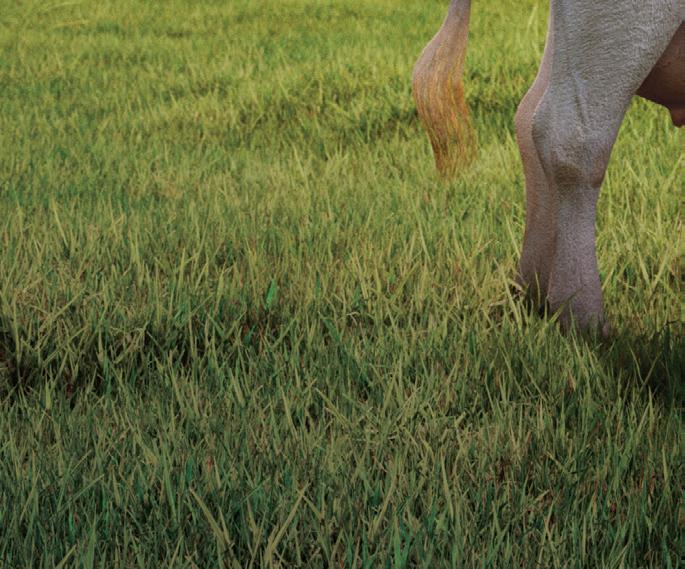
ingredients that help bolster your herd’s defences, reducing the incidence of illnesses and minimising production disruptions.
By supporting immune function, Vitalise


contributes to the overall health and resilience of your dairy herd.
Reproductive health is critical for sustaining your dairy operation’s long-term success. Vitalise supports fertility and reproductive performance in dairy cows by providing essential nutrients necessary for optimal reproductive function.
By enhancing reproductive health, Vitalise helps ensure successful breeding outcomes, contributing to the sustainability of your breeding program.
Stress can negatively impact dairy cow health and productivity. Vitalise includes ingredients that help alleviate stress and promote overall welfare, leading to happier, more contented cows better equipped to meet the demands of modern dairy farming.
By reducing stress levels, Vitalise supports a positive environment conducive to optimal herd performance.
Integrating CP Lime Solution’s Vitalise into your dairy herd management program offers a multitude of benefits.
From improved nutrition and digestive health to enhanced immune function and reproductive performance, Vitalise provides comprehensive support for your herd’s wellbeing and productivity.
By investing in Vitalise, you’re investing in the long-term success and sustainability of your dairy operation.
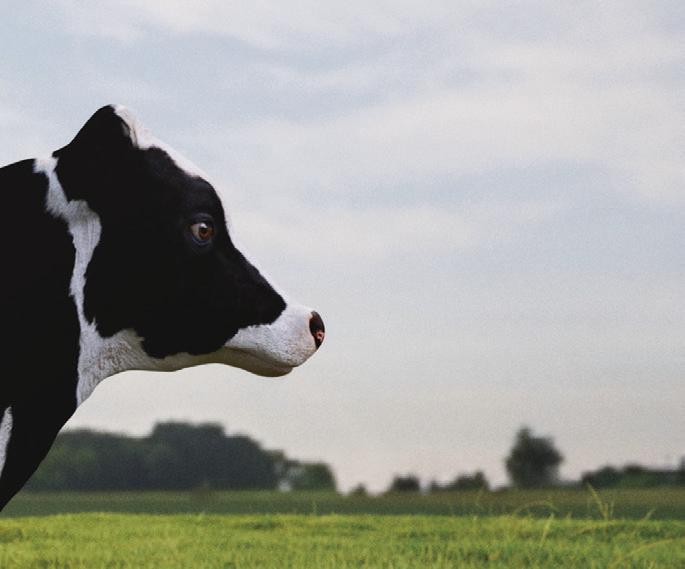



CANTERBURY FARMING May 2024 21
is a
solution to your
health and productivity. by CP Lime What are your cows missing? Revitalise your herd with a precise mix of pelletised minerals and supplements that are easy to feed in-shed and 100% utilisable without wasting another hour dusting. 0508 678 464 | cplimesolutions.net.nz/vitalise
Vitalise animal nutrition
comprehensive
dairy herd’s
















22 May 2024 CANTERBURY FARMING
PERFECT PARTNER PASTURE’S
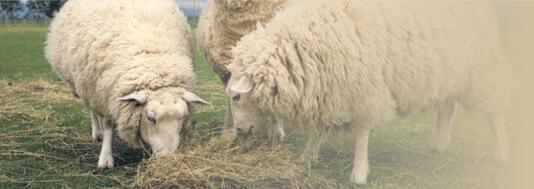


Drivers for winter grazing profitability
Poor lamb returns and a reduction in contracts for ryegrass seed crops is leading some Canterbury mixed arable farmers to reduce lamb finishing numbers in favour of dairy grazing this season.
] by Kent Caddick
This was the key message from a panel of four Mid Canterbury mixed arable farmers when outlining their drivers for profitability at a combined Foundation for Arable Research and Beef + Lamb New Zealand winter grazing seminar in Rakaia.
Methven farmer John McCaw told the seminar that his arable farm is focused on cocksfoot and ryegrass seed production as well as growing vegetable seed and cereals.
McCaw said a mixed farm, it normally trades 4000 to 5000 lambs a year, but these numbers will be back this year.
“We buy lambs based on our ryegrass seed crop area for the following spring, at 35 lambs a hectare. This gives us a few extras, so we can get a draft away before winter.”
Lambs are bought in autumn, after harvest, and initially graze autumn-sown cocksfoot before being wintered on greenfeed oats, rape and fodder beet. In early spring, lambs are used to graze ryegrass paddocks before these are shut up for seed production.
“Every paddock on the farm, apart from two last year, had stock across them. So, we are an arable farm, but we are very much a mixed farm,” McCaw said.
“We find the system works well for income generation as well as crop management, particularly the cocksfoot in the autumn and the ryegrass control in the spring.”
In terms of dairy grazing, the farm has had an arrangement with the same dairy farmer for 15 years. About 300 heifer calves arrive just before Christmas, staying until they are 18-month-old in-calf heifers and ready to return to the dairy farm. About 750 dairy cows are grazed in winter.
Methven farmer George Lilley said in the last couple of years lamb numbers on farm have dropped by 1500 to 2500-3000, while dairy cow numbers have lifted from 400 to 600.
“This is mainly for profitability and to reduce the risk of holding so many lambs,” said Lilley whose farm is largely ryegrass based, with wheat, barley, and break crops in a four-year rotation.
“While the return per kilogram of drymatter is better with dairy grazing, this needs to
be balanced against the damage the dairy stock can do to paddocks and the potential difficulty in establishing crops in these paddocks the following spring.”
Rakaia farmer Simon Lochhead said as a mainly no till farmer he aimed to limit soil damage and in recent years has been exclusively lamb grazing.
“However, the farm has historically done dairy grazing and cows will be returning this year. This is for more profitability, and to diversify and spread risk,” Lochhead said.
“Lamb numbers are bought to suit the grass seed area. As there are fewer contracts for grass seed, I will be reducing lamb numbers to match.”
He said the leaving date for the last lambs is determined by the closing date of new season’s grass.
“The last load has to go then, irrespective of whether it is fully finished or not.”
Lepoutre-Kroef Farm arable manager Lachlan Angland said that its system is arable and vegetable production with grazing used for seed crop establishment and grazing cover crops during winter. They only use lambs and occasionally the neighbour’s hoggets and ewes.
FAR senior environment researcher Abie Horrocks told the seminar that New Zealand arable growers have some of the most diverse crop rotations in the world.
“In comparison to arable soils overseas, the degree of livestock integration means arable soils are in better condition because rotations that include livestock can support inclusion of restorative crops, such as ryegrass, that build soil organic matter,” Horrocks said.
“In addition to soil quality, nutrient cycling and cashflow, there are other reasons why arable growers have livestock. These include weed control, natural tillering (managing height and bulk of grass seed crops), crop residue management and rotation fit.
He said as new environmental and greenhouse gas emissions regulations come onstream, regulators need to be well-informed of the role livestock plays in an arable farming system.
“If soil quality declines, more fertiliser and irrigation may be required,” Horrocks said.
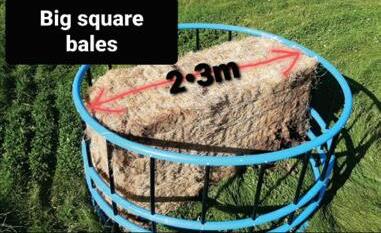


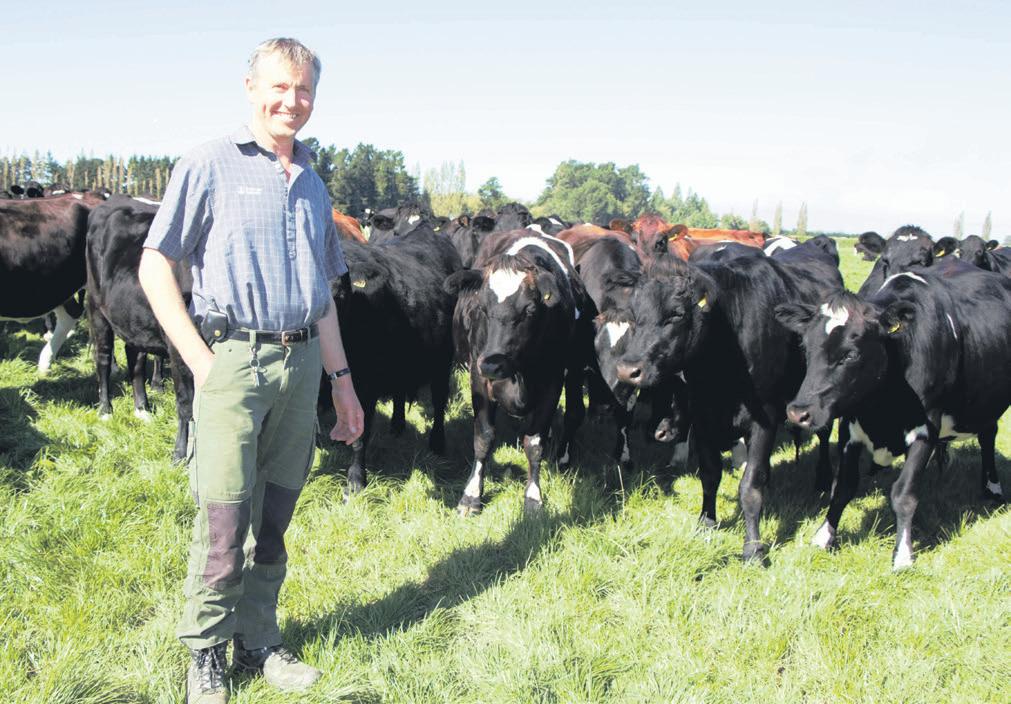
“Removing livestock from mixed rotations may have an unintended consequence of increasing pesticide use and if weeds become more problematic as a result it could introduce a risk to the production of weed and disease-free pure seed lines.








“Quality
Information for this article was supplied by the Foundation for arable Research. For more go to: www.far.org.nz
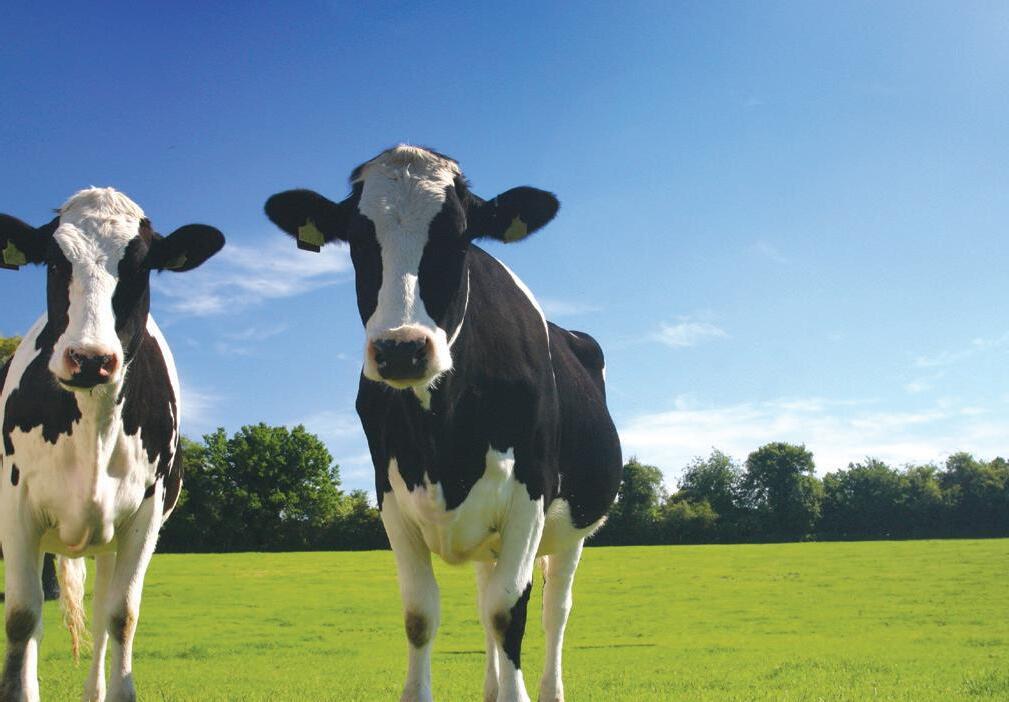




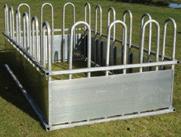
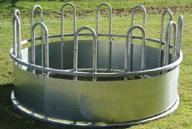


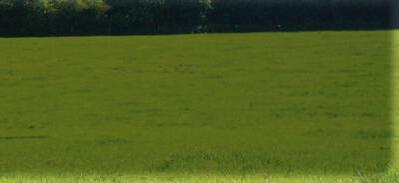


CANTERBURY FARMING May 2024 23 0800 4 PALMERS - 0800 472 563 - 34 Robinson St, Riverside Industrial Estate, Ashburton Be quick! Get your order in! Benefi ts of our feeders • Various sizes and types available • Safe feeding while eliminating as much wasted hay as possible • Longevity of the feeder maximised • Competitive prices • Deer and sheep feeders also available Quality hay feeders from Palmer Agri Parts Direct are what they need. Square Feeders Round Feeders Hay Feeders Cradle Feeders Double square feeders
seed lines are the ultimate driver in an arable business.”
Changing: Methven mixed arable farmer John McCaw with in-calf heifers reared for a neighbouring dairy farmer.



Can mRNA vaccines boost production?
Researchers say mRNA vaccine technology could play an important role in boosting livestock production to meet global food demands.
University of Queensland’s Professor Tim Mahony said it was vital for the livestock industry to take advantage of the unprecedented investment in mRNA vaccination technology triggered by the Covid-19 pandemic.
“Infectious diseases are limiting the production of edible protein for human consumption, which is affecting both the quality and quantity of the product,” Professor Mahony said.
“One benefit of mRNA vaccines is the flexibility to make changes when new variants of diseases emerge, which makes it an ideal solution for reducing losses within livestock production systems in the future.
“For a complex disease like bovine respiratory disease, a conventional approach would require us to make a vaccine for every individual pathogen.
“But an mRNA vaccine allows us to pull apart those pathogens and select which ones to incorporate into a singular vaccine.”
A report by research firm Oxford Analytica commissioned by international not-for-profit HealthforAnimals estimated $US982 million was lost each day through productivity losses in livestock industries.
It also found every percentage point reduction in beef cattle losses due to disease could provide enough food to meet the needs of 317 million people, while a 10 per cent re-

duction in disease could substantially reduce greenhouse gas emissions.
Professor Mahony said the challenge was for livestock industries to harness the rapid advances in vaccination to address key diseases affecting production.
“For some neglected diseases, identifying the protective antigens remains a critical knowledge gap,” he said.
“Currently, there are no mRNA vaccines
approved for use in food-producing animals.
“As these vaccines are developed for animals, they will be subject to scrutiny by multiple agencies as part of the strict approval processes for use in livestock. mRNAs are essential molecules in the cells of all animals and plants which we consume in our food. Despite this, consumer safety will be an important consideration before mRNA vaccines are approved for use in livestock.

Boost: University of Queensland researchers say mRNa vaccine technology could play an important role in boosting livestock production.
“The major challenge is for governments, peak industry bodies and veterinary health companies to make the investment required to develop mRNA vaccines for ruminants and other livestock. As we saw with the pandemic, if you put enough resources in the one spot, things can happen very quickly.”
The research paper was published in the journal Vaccines.
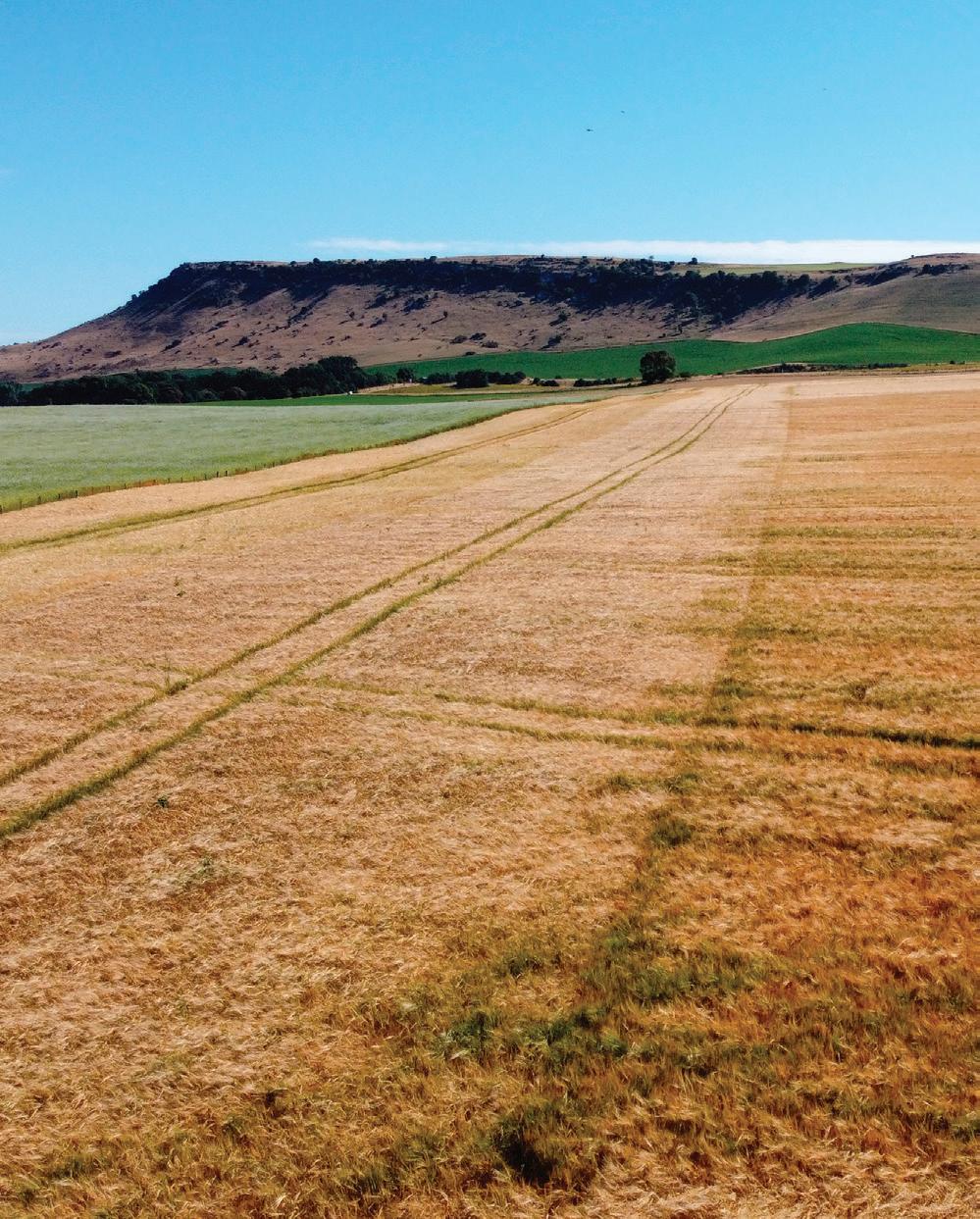

24 May 2024 CANTERBURY FARMING
] Article supplied by ] University of Queensland



Methane target review welcomed
Federated Farmers say a review of methane targets will be viewed as a major win for farmers, fairness, and the New Zealand economy.
] by Kent Caddick
Climate Change and Agriculture Ministers (Simon Watts and Todd McClay) recently announced an independent panel of experts will review agricultural biogenic methane science and targets for consistency with no additional warming.
“This is a really positive step forward and will be welcomed by farmers and rural communities,” Federated Farmers president Wayne Langford said.
“Methane targets have been a point of contention since they were first introduced because the Government of the day chose to set targets that were highly political instead of scientifically robust.
“They go much further and faster than what is needed to achieve ‘no further warming’ and will come at a huge cost to farmers, rural communities, and the New Zealand economy,” Langford said.
“That’s why Federated Farmers have opposed the current targets from day one and have been calling for this independent review for some time now.”
An urgent review of methane targets was one of Federated Farmers’ 12 key policy changes for restoring farmer confidence during last year’s general election.
“All New Zealanders should want climate targets that are scientifically robust, realistic, and fair for our communities,” Langford said.
“We need to be taking a science-led ap-

proach to targets that reflects the different impact each gas will have on warming.
“Other parts of the economy are being asked to reach net zero and stop their contribution to further warming by 2050, but farmers are being asked to go much further than that.
“It’s important that this review is given a clear objective of aligning methane targets with what would be required to stop farmers contribution to further warming,” Langford said.
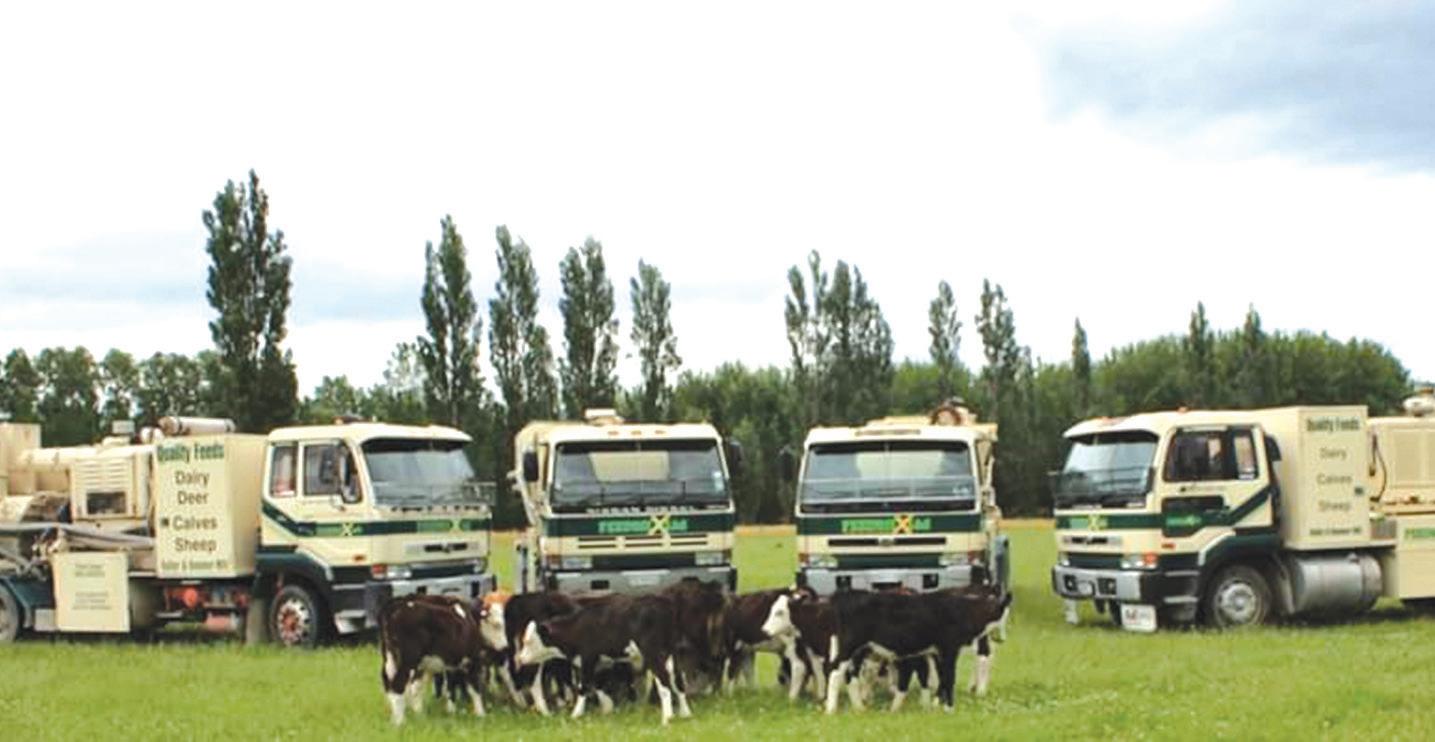
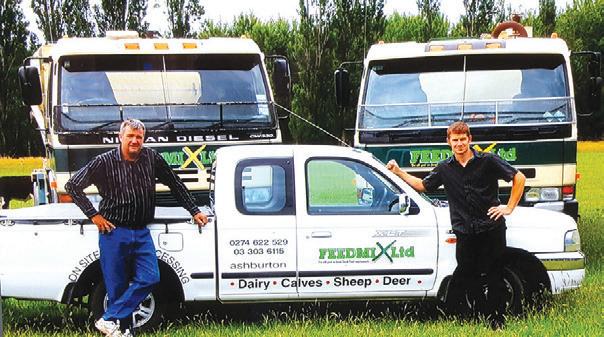


Review: Federated Farmers president Wayne Langford is welcoming an independent review of methane targets.





‘We need to be taking a science-led approach to targets that reflects the different impact each gas will have on warming.
Wayne Langford
Farmers president
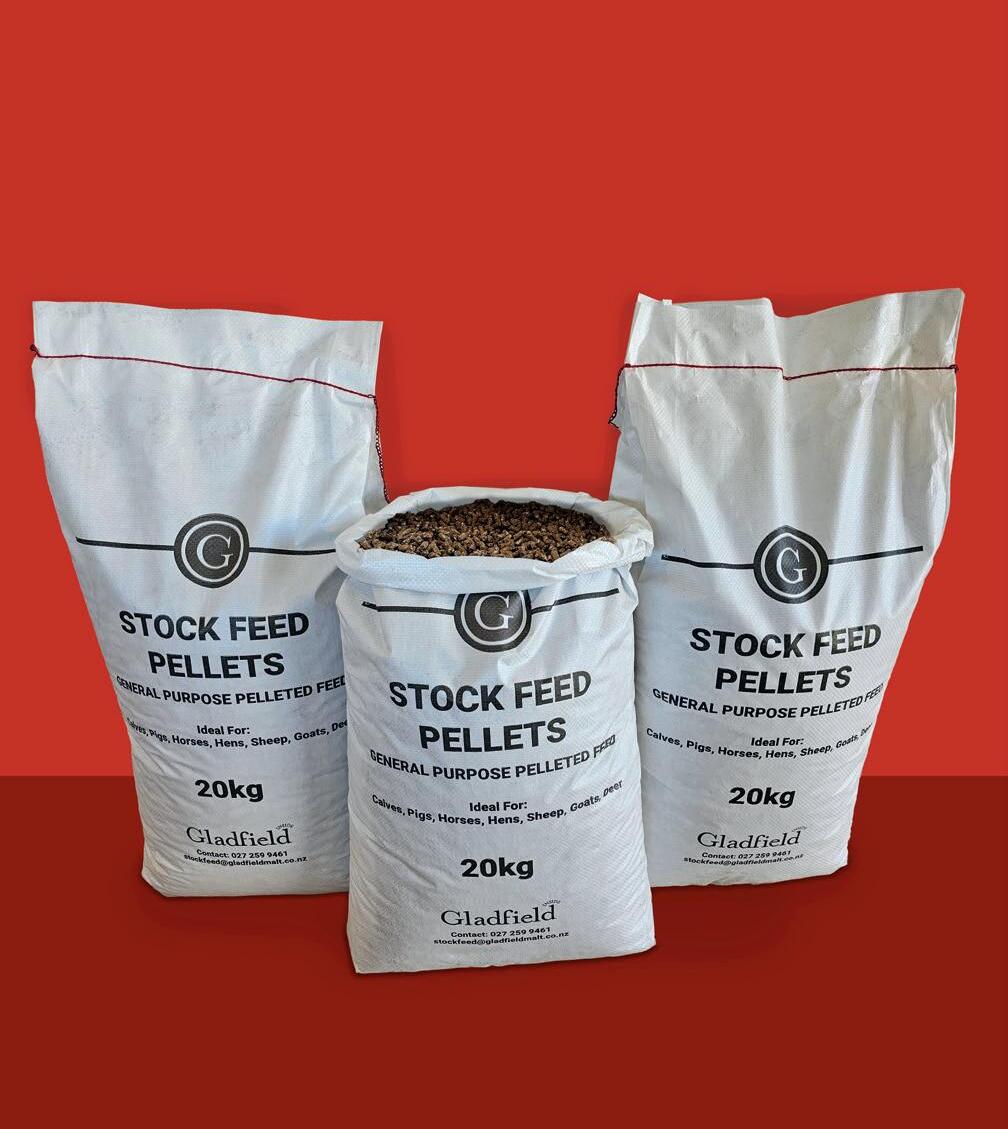

CANTERBURY FARMING May 2024 25 *Pricedisplayedappliestograinsuppliedbythefarmer www.feedmix.co.nz Stewart0274622529•Devin0279304906 FINDOUTHOWFEEDMIXCANWORKFORYOURHERD •ServicingCulverden-Oamarufortnightly •Madefreshon farmandcustomblended •Rolled,crushedorbruisedgrain,peas&maize •OtherMicro-ingredientscanbeadded • We’llevenunblockaugertubeswhilewe’rethere DAIRYMEALPROCESSINGCALFMEALPROCESSING from $40 pertonnefrom $170 pertonne Customblendingonfarm Traceelementsblendedif required Unblockingof rollermillaugertubes Grain rolling Yourgrainorgrainsuppliedbyus* Freshfeedprocessedonfarm Yourgrainorgrainsuppliedbyus* Suppliedinsacks, readytouse Priceincludesmolasses,premix minerals/vitaminsandbovatec CANBEBULKPROCESSEDANDTRANSPORTEDTOYOU
Federated



] with ali Spencer

Deer industry looking ahead to new season
Now the roar’s finished, along with mating, and this year’s deer weaners have been moving off-farm, deer farmers’ thoughts are turning to the new season ahead.
For velvet, the key issue continues to be resolving market access for frozen New Zealand velvet into China. DINZ executive chair Mandy Bell and markets manager Rhys Griffiths were on the ground in Asia in March, meeting with trade contacts there.
Their flurry of “constructive and positive” meetings both in China and New Zealand revealed “healthy relationships at all levels,” for Bell, she told a “town hall” video conference in early-April, which attracted around 50 velvetters, processors and others from industry.
Realising deer farmers will need market certainty on what is happening, the Ministry for Primary Industries’ negotiators, who are leading the discussions, are aiming on conclusion by the middle of the year.
Bell and Griffiths’ tightly packed two week itinerary, also saw them visit South Korea. There, they met with trade contacts in New Zealand velvet’s developing healthy food market, including “our closest partners at the Korean Ginseng Corporation, Kwangdong, Yuhan Care,” Griffiths reports.
Canterbury-based DINZ executive chef Graham Brown was also on hand to help

introduce venison to a group of influential Korean chefs through a Venison Tasting Experience held at the New Zealand Ambassa-

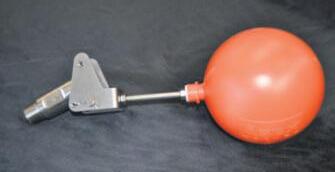
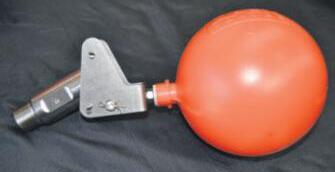
dor’s residence in Seoul. That appeared to be, “a great success,” says Griffiths.
It “started the conversation with influential chefs, also “stimulating interest with various other contacts”.
For venison, marketers are in the throes of negotiating contracts for September/October’s new premium chilled venison season. While still too early for firm farmgate prices, exporters think demand from key markets in Europe, the US and China, may outstrip supply this year, following the heavy hind kill last year.
They are indicating farmgate prices will be at, or slightly above, last year’s, with some offering minimum contracts.
Here, at home, as weaners were moving off-farm, OSPRI was reminding deer farmers to ‘Be a mate, update NAIT’. Recognising the challenges some deer farmers were having with complying with NAIT, OSPRI is working with DINZ and NAIT on support for farmers and solutions for when systems fail.
Back in the office, the deer industry was welcoming the Coalition Government’s Action Plans, especially reform around the National Policy Statement on Freshwater Manage-
Hands on: DINZ executive chair Mandy Bell got hands on in Korean health food company Hanpure’s modern and sophisticated Korean dispensary.
ment, though this will require legislation to be introduced to effect change, DINZ has noted.
“Knowing they are a priority, is a huge relief for the agricultural sector,” DINZ environmental stewardship manager Luka Jansen has commented.
However, the deer industry needs to continue its sustainability journey, Mandy Bell has cautioned. In her journeys, she has noted a shift outside of government regulations.
“We will not only need to be strong in advocacy, but also aware that the world is continuing to move on in looking for healthy products and validation of care of the environment,” she says.
Deer farmers’ excellence in the area was showcased on 2 May when long-time deer farmers the Guild and Dunbar families of High Peak Station welcomed visitors to a Ballance Farm Environment Awards Open Day as this year’s Canterbury regional supreme champions.
They were keen to see first-hand the diverse high-country business and learn how it manages the sustainable practises that underpin the whole operation.


















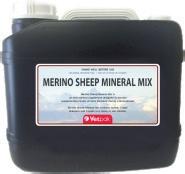




26 May 2024 CANTERBURY FARMING LIVESTOCK P (07) 870 2024 HEALTHY LAMB RTU HEALTHY EWE RTU YOUR “GO TO” SHEEP MINERAL COMPANY www.vetpak.co.nz 24/7 SMARTRACE Adult Sheep Boluses Registered product ACVM No A11545 MERINO SHEEP MINERAL MIX













We need to talk about China


] with allan Laurie
] Laurie Forestry Ltd
Over the last month, the China market has settled down after a significant swing down with some key factors moving to the positive, albeit not stunningly so.
MNZIF
Whilst New Zealand wharf gate prices have been negatively impacted over the last month, some of that has to do with shipping. Despite the shipping cost indicator, the Baltic index, showing weakening freight rates internationally, the charterers of log vessels in NZ are suffering at the hands of more localised demand.
Of those factors I typically monitor in China, inventory and daily usage are the most important.
The Radiata log Inventory has been increasing marginally, as at mid-April sitting at around 4.2 million m3. This has generally been regarded positively with most expecting the inventory to start falling when the NZ Log supply juggernaut starts to slow.
Daily softwood log usage across the China Eastern Seaboard has been running at 60,000 too 65,000 m3 per day, mostly the upper end and better than expected by most. This has been the primary reason for a slowed inventory build with NZ supply and usage very closely aligned.
The challenge going forward for NZ will be to maintain a lower production cycle. As China moves toward the heat of the summer, construction activity can be expected to slow down. If NZ does not match that, we can expect CFR prices to remain subdued.

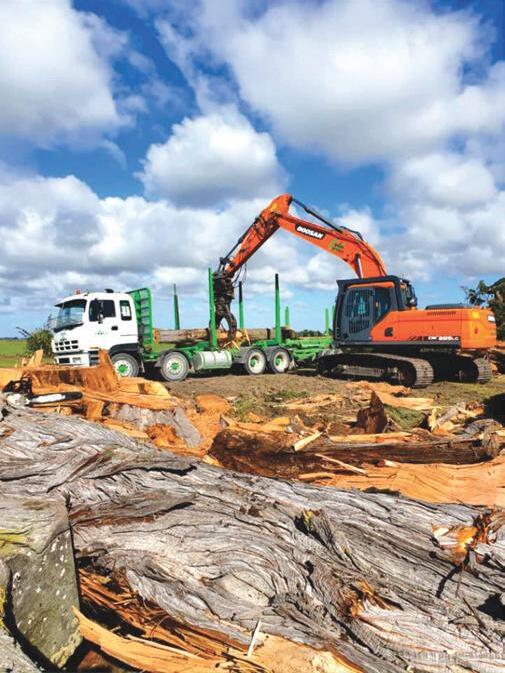

I have stated before and I will not shirk from that which I believe to be true, the need to get the supply construct right for NZ Forestry Inc into critical markets like China has never been greater. The need for a collective discussion about how this might work needs to happen and without delay.
The NZ forestry sector is literally losing billions of dollars in export sales because of a failure to get in a room, sort it out, and work to a plan. And as they say the failure to plan is to plan to fail and that thus far, we have done stunningly well.
We have harvest contractors and trucking companies on their knees with business failures inevitable. It is about high time we really do show we care about the whole supply change which some need to be reminded is people. It is not computers, ships, logs or forests.
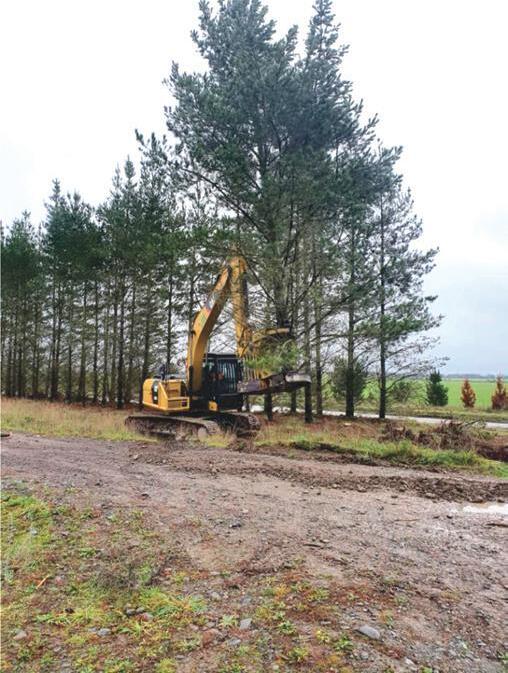
The current significant slow-down in lake Taupo forests Cylone Gabrielle harvest is gaining momentum, most not close to the action view this as positive. The downside is many contractors are reportedly not finding work back in hometown so casualties will be the order of the day.
But, the slowdown is very much needed by the rest of NZ to bring our daily national harvest rate down.
From our international informants, the appearance of reasonable volumes, once again coming out of the Pacific Northwest into China is not good news for NZ. The recent kiss and make up between Australia and China is also seeing some Pine shipment restarts to China, this also furrows the brow somewhat.
For NZ, the resumption of shipments of our wonderful Radiata logs to India is very good news. The challenge here will be for
there not to be a massive stampede to the India gate and we all beat ourselves up with price trying to get through it. For a normally positive person, why do I have and impending sense of doom about that?
The reduction in log trade to Korea is having its impacts through sales volume loss and shipping. Previously, many cargos would include top-deck, one port discharge Korea and below-deck one port discharge China.
There were fumigation and logistics requirements in those rotations that ensured the use of lower cost Handy class vessels.
The loss of Korea volumes now has NZ charterers targeting more costly Supra-max vessels, all below deck cargo, one port discharge China. This in part is helping to drive freight rates up for log exporters.
Meanwhile, NZ sawmill owners are continuing to provide stable pricing and consistently good sales for forest owners. A general sense of this key market suggests the list of forward orders is shrinking with margins also shrinking to maintain sales. This is somewhat of a concern. Let us hope a more business friendly government can help swell those order books.
As always, please remember the thoroughly important message, “despite the challenges, it remains, as always, fundamentally important, the only way forward for climate, country and the planet, is to get out there and plant more trees”.





CANTERBURY FARMING May 2024 27 FORESTRY & LOGGING
Safety alerts to increase awareness
A near miss experienced by a North Island farm worker when their tractor ‘park’ gear failed, has been shared as the latest Safety Alert from Safer Farms.
] Article supplied by Safer Farms
The employee at the East Coast farm had to jump out of the way as the unmanned vehicle rolled towards him. It then continued to roll through the farm for 1.2km before it was finally halted by trees.
The Alert outlines how the farm staff member was feeding silage to stock and parked the tractor in a gateway, engaging it in ‘park’ gear as he went to open the gate. The park gear failed, and the worker had to jump out of the way to avoid being hit as the vehicle started rolling.
Potential causes for the incident included potential wear and tear on the park gear due to operators ‘throwing’ the tractor into ‘park’ rather than coming to a complete stop first.
A further factor could be not using back up methods, such as lowering the front forks/ hydraulics to the ground before getting out of the cab.
While emergency brakes can also be engaged in conjunction with the Transmission Park Gate, this can cause issues as operators can drive off with the brake on and strain the brake function.
It is recommended that operators should only engage ‘park’ once the tractor has fully stopped. The park lock and park brake should both be applied when parked or operating from a static position.
They should also double check for movement or instability – even when the park gear / brake is engaged – before leaving the cab. A backup method should always be used, even if the ground seems relatively flat.
Safer Farms brings together farmers and senior leaders from across the agribusiness
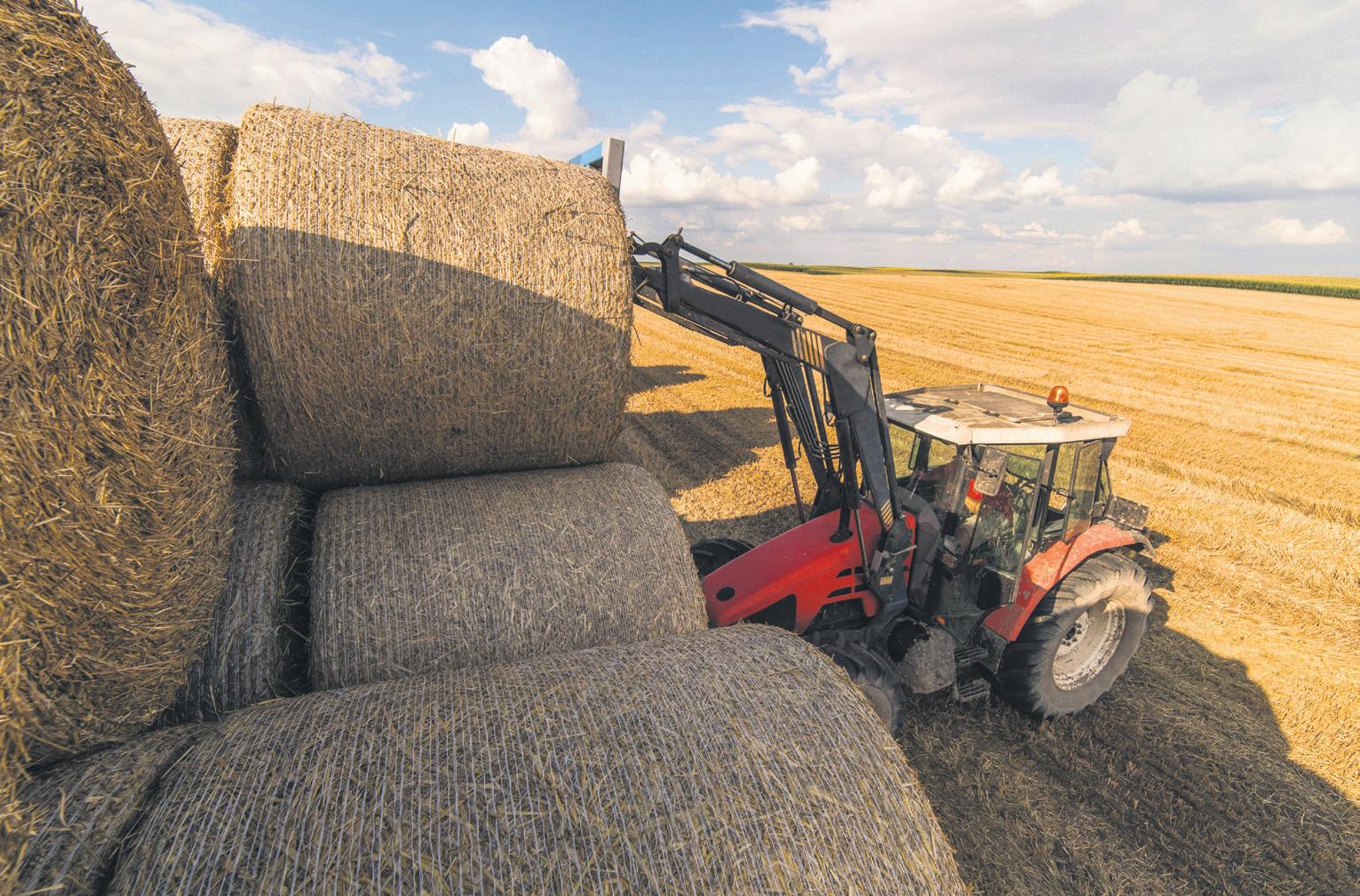
Warning: Safer Farms is urging tractor operators to ensure their machine is at a full stop before engaging the park gear.
to lead and inspire the sector-wide Farm Without Harm strategy.
Lindy Nelson, chair of Safer Farms and a
Farm Without Harm ambassador, said Safety Alerts are based on real-life documented incidents and provide key lessons for farmers.
She said the Alert also underlines the importance of managers providing thorough operator assessment and training.



“Safety Alerts are about us sharing and learning from one another. It’s a new approach to reducing harm,” Nelson said.
“We’re encouraging farmers to discuss the Safety Alerts with their teams and ask if these incidents could happen on their farm. It’s also a good idea to look at what farmers have in place to prevent such an incident happening.”
“This includes raising awareness about overloading, including checking the size and weight of loads, ensuring operators know how to counterbalance the tractor effectively and removing hunger boards from wagons.”
To view the Safety alerts, please visit www.farmwithoutharm.org.nz/safety-alerts.




28 May 2024 CANTERBURY FARMING FORESTRY & LOGGING
FOREST GROWERS LEVY VOTE 2024 LEVY VOTE 2024 Forest Growers The Forest Growers Levy Trust is conducting a national round of meetings to discuss the proposal to renew the Forest Growers Levy for 2026 to the end of 2031. Canterbury Dates Town Time Address Tue 28 May Ashburton 10.30 am Hotel Ashburton, Racecourse Rd Tue 28 May Christchurch 5.30 pm F3 lecture room, School of Forestry, Forestry Rd, University of Canterbury, Ilam Come along to your local meeting to hear what is proposed and have your views heard. The meetings scheduled for next week are; For more information go to https://fglt.org.nz
One company for all logging and land development needs
Campbell Contracting 2013 Ltd are a Mid Canterbury-based logging company covering all aspects of logging and land development.
] Article supplied by ] Campbell Contracting
Co-owners Jeff McNeilly and Craig Campbell have built up a successful business over the last 11 years, beginning with one excavator back in 2013 growing to nine excavators now and various other logging equipment.
The last 12 months has been a very trying time in the Forestry sector with log export prices being average at best for the majority of it. Unfortunately, this has made it tough for a lot of contractors to remain in the industry.
Jeff and Craig believe the main reason they have been able to carry on is because they have built a good reputation in the wider Canterbury area and have numerous repeat clients that they work closely with.
Another key to their success is diversifying when needed, the prime example of this is the new Pezzolato drum woodchipper they have arriving mid-May.
This is a big step for Campbell Contracting as they plan to supply local dairy farms with calf bedding and eventually look to break into the ever-growing bio-fuel market.
With 12 current staff including Jeff and Craig they run three logging crews spread from South Canterbury to the wider Banks Peninsula region, being spread so far is trying at times but is made a lot easier by their great team of workers willing to stay away from home and adapt in order
No job too big or small: From single trees around sheds and powerlines to forestry plantations, Campbell Contracting does it all.
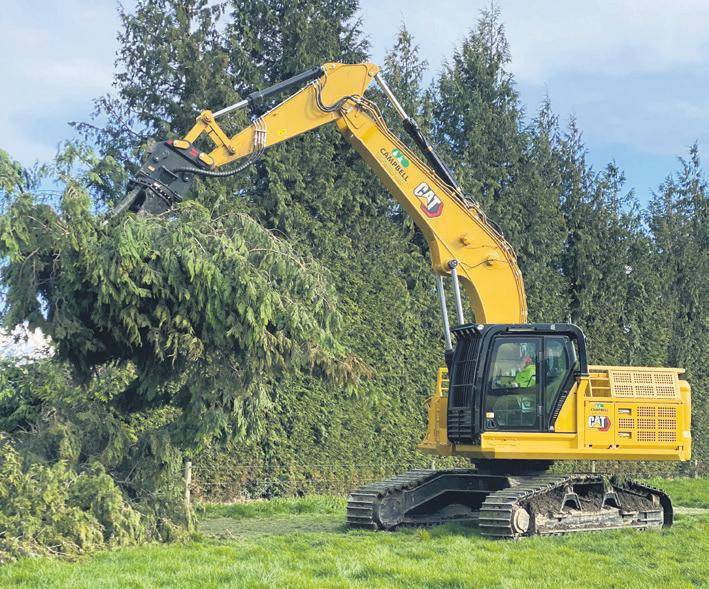

to keep the wheels turning and the wood flowing.
Campbell Contracting also run three logging trucks including a self-loading crane truck that can quite often be seen running between Oamaru to Christchurch carting fence posts for the Great Southern Group. A recent addition of a new Scania 770 with a five-axle trailer has been carting Douglas Fir sawlogs from a block that one of their logging crews has been harvesting in the hills between Mayfield and Mt Somers. They have been supplying Douglas Fir to the local domestic market delivering to various mills in the Christchurch area.

Campbell Contracting has access to Timaru and Lyttleton export markets as well as the domestic market allowing for top returns for trees harvested.
No job is too big or small for Campbell Contracting, from single trees around sheds and powerlines to forestry plantations.
Don’t hesitate to give Jeff or Craig a call and let them share their vast experience built up over the last 11 years.
For more information on Campbell Contracting give Craig Campbell a call on 027 311 3324 or Jeff McNeilly on 021 236 6980, or email them at: campbellcontracting@outlook.co.nz.


Well connected: With access to Timaru and Lyttleton export markets as well as the domestic market, Campbell Contracting allows for top returns for trees harvested.
Forest Management LTD

With 25 years experience in the industry, the Forest Management Team offer services in:

• Woodlot and shelterbelt harvesting
• Timber sales to domestic and export markets
• Forest establishment of harvested and greenfield sites
• Forest valuation
• Emission Trading Scheme advice and management
• Trainer/Assessor in NZQA forestry related units
Our highly experienced teams aim to ensure value optimisation in all aspects of forest management.
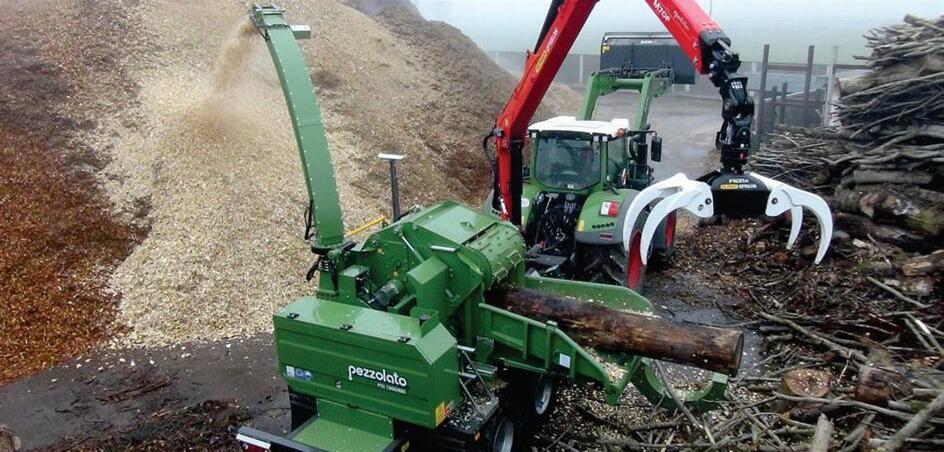

To find out more call us on 03 343 4101 or visit www.forestmanagement.co.nz
CANTERBURY FARMING May 2024 29 FORESTRY & LOGGING
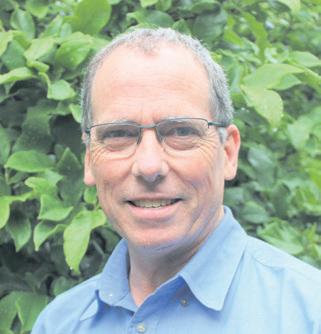

Water storage crucial role in community resilience
In the dynamic uncertainty of horticulture and agriculture, the delicate relationship between water and food production is a cornerstone of the work of IrrigationNZ.
] by Stephen McNally
] IrrigationNZ
] Principal Technical Advisor
With over four decades of personal experience as a horticultural scientist and agricultural engineer, I’ve seen firsthand the significant role that good water management plays in our industry, presenting both daily and long-term strategic challenges.
My foundation was laid at Massey University, where my degree delved into the intricacies of plant-soil-water relationships.
Back then, my interest in understanding the complexities of biological systems and growth-limiting factors fuelled my journey into the implementation of irrigation.
Little did I know that my fascination with the dynamics of soil structure and the microscopic root hairs, the point of entry of water and nutrients into a plant, would become so intertwined with the macro-level discussion on water management and storage policy.
In my current role at IrrigationNZ, I’ve seen how water resource management and storage infrastructure have evolved from a mere technical concern to a strategic imperative for our country’s future.
As a sector body, we understand the challenges that farmers and growers face in managing water resources effectively. Water storage isn’t as simple as just keeping crops hydrated – it’s about ensuring reliability and resilience in food production in the face of increasingly variable weather patterns. But it’s a topic laced with emotive commentary.
Parts of our industry have witnessed the transformation derived from water storage across some regions and catchments. From on-farm reservoirs to community-led initiatives, these storage solutions have not only ensured the survival of crops but also underpinned the productivity and resilience of those rural communities.
But the journey hasn’t been without its challenges and the need for continued learning. Climate variability, fickle consumer preferences, and evolving regulatory landscapes have all added layers of complexity to food production.
Amidst these challenges, one thing is still clear: the need for more extensive availability and reliable water from storage has never been greater.
Take, for example, the opportunities presented by horticulture—a vibrant tapestry of vegetable crops, fruits, and flowers at the

vide a buffer against the vagaries of climate change, but they also support the long-term viability of our industry, the rural social fabric, and the national economy.
‘Future water storage and distribution infrastructure isn’t just about agriculture – it’s about supporting our wider communities as well.
core of a key export industry. For land use change decisions, a reliable water supply is a fundamental enabler.
Where an entire season hinges on a single crop harvest, or animal breeding stock relies on high-yielding pasture, the consequences of water insecurity are profound, leaving some sitting within precarious enterprises.
That’s why initiatives like the establishment of multi-use community water storage schemes are so critical. Not only do they pro-
Of course, none of this is possible without the dedicated efforts of the farmers, growers, their families, and support industries I’ve met, all with their feet firmly on the ground.
These individuals, driven by a passion for their enterprises, have an intuitive affinity for the land, intricately connected to the dynamic ever-changing ecosystems and markets they work within.
Future water storage and distribution infrastructure isn’t just about agriculture – it’s about supporting our wider communities as well. When we have enough water, we can produce more food, which means more jobs and more money flowing through our economy.
It’s also a solution to unreliable drinking water sources, its industry support, it’s an opportunity for hydro energy production, and it’s a feature of an overall freshwater management strategy, something we still lack as a country. This has benefits for everyone involved. Don’t let anyone dismiss these as inconsequential.
Amidst all the noise of disagreement and concern suggesting that food producers are simply seen as exploiters, there emerges a contrasting story, one that focuses on water storage.
One that speaks to the potential for balanced outcomes, where productive capacity and environmental stewardship can converge to achieve common ground solutions. In this calmer, positive, and informed narrative, water storage emerges as a demonstration of a collective commitment to securing the wellbeing of future generations.
As we confront the challenges of a changing world, the imperative to embrace this narrative has never been clearer. In the face of burgeoning global population growth and shifting dietary consumer preferences for safe, nutritious, and accessible food, the need for a resilient agricultural sector has never been greater.
It reminds me of where I started, where addressing the delicate balance of food and water now stands as a testament to an industry of ingenuity and resolve. As conversations unfold, the benefits of water storage will extend far beyond the confines of our fields – they resonate within the very heart of our communities.

30 May 2024 CANTERBURY FARMING WATER & IRRIGATION FOR ALL YOUR WATER WELL DRILLING & WELL SERVICING REQUIREMENTS Submersible Pump Installation & Removal Potable Water Testing Pump Testing FOR PROFESSIONAL SERVICE FROM AN EXPERIENCED TEAM Rural Water Supply Lifestyle Block Supply Ph - 027 222 1587 / Email - Malcolm@hydrill.co.nz
Store it: The recently opened Waimea Water water-storage facility in Tasman not only safeguards the region’s water supply but also enhances water quality according to IrrigationNZ. Photo by Tim Cuff




 ] Dr andrew Dark
] Aqualinc
] Dr andrew Dark
] Aqualinc

Storage options for maintaining and growing resilience
Irrigation water supplies have been under pressure this summer, with the government classifying Canterbury and a number of other regions as being under drought conditions.
That pressure has also been felt by irrigation systems that include storage: we’ve seen several headlines accompanied by images of dams with very low water levels.
In the face of a changing climate, it’s going to be increasingly important to ensure that water storage systems, including those that are already in place, are adequately designed to deliver the required levels of water supply security alongside other co-benefits such as environmental flows and recreational opportunities.
Previous long, dry summers have prompted thinking (both within farming circles, and in local and central government) about water storage as a means of maintaining the longterm resilience of existing irrigated land uses and enabling growth or land-use change.
Investing in a reliable water supply is crucial for new developments seeking external capital, especially where high-value land uses are being considered. However, securing adequate water sources has become increasingly challenging due to various factors, including existing water allocations being at or near limits in many areas, and uncertainty around future regulations.
The significance of water storage, particularly for high-value horticulture, has been consistently underscored by governments past and present.
The first critical step in the process of developing water storage is accurately sizing the storage capacity, which requires a comprehensive understanding of several key factors. These include the variability of the water supply over time, the specific water demands the intended crops, and the desired level of water supply reliability.
There are two primary options for water storage: community schemes and on-farm storage.
Community schemes offer economies of scale and centralised management, making them potentially more cost-effective per unit of water stored or hectare irrigated. However, establishing community schemes can be challenging, requiring broad community support, and navigating complex regulatory processes to obtain necessary resource consents.
Once operational, these schemes handle ongoing operation and maintenance tasks, and in several cases the water supply entities have also been handling land-use consenting on behalf of farmers.
Conversely, on-farm storage places decision-making and responsibility solely in the hands of individual landowners. While this option may offer more flexibility and autonomy, it also requires significant effort to obtain consents and construct necessary infrastructure.
On-farm storage systems can be tailored to meet the specific needs of individual farmers, but may be less cost-efficient, including the opportunity cost of land that is taken out of production.
A combination of community schemes and on-farm storage presents an attractive option for balancing flexibility and reliability in water supply.
By leveraging the benefits of both approaches, farmers can customize their water supply solutions while benefiting from the reliability and economies of scale offered by community schemes.
This hybrid approach may be particularly appealing for mitigating risk and attracting investment, as it provides a baseline level of reliability while allowing for individualised adjustments based on farmers’ specific needs and risk tolerances.
It could also be an economically and hydrologically feasible approach for bolstering the supply reliability of existing systems without the need for major dam remediation projects.
Whichever storage option is chosen, accurately sizing water storage facilities through hydrological modelling studies is crucial for ensuring an adequate and reliable water supply while balancing cost and consenting considerations.
These studies utilise historical climate data and projected future climate scenarios to predict water availability and demand.
While commissioning a modelling study for an on-farm storage project may seem excessive, the potential consequences of insufficient water supply during critical growing periods make the effort worthwhile.

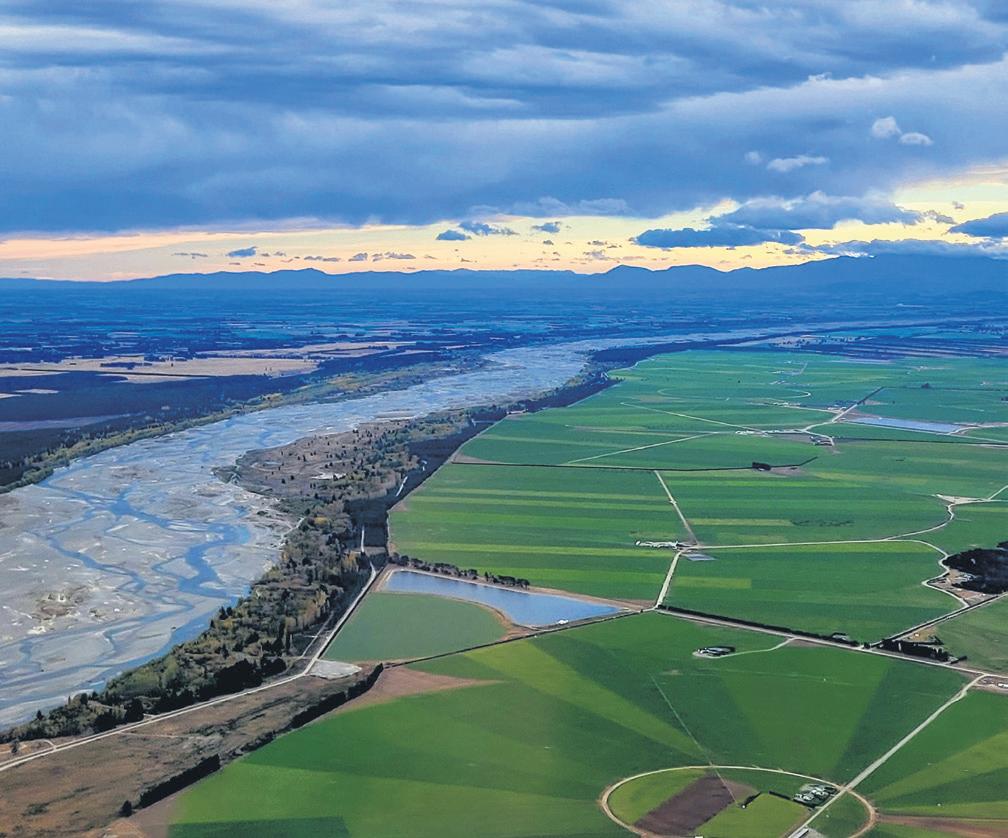
Challenging: Securing adequate water sources has become increasingly challenging due to various factors, including existing water allocations being at or near limits in many areas, and uncertainty around future regulations.








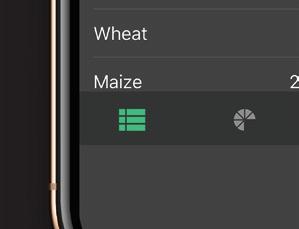





CANTERBURY FARMING May 2024 31 WATER & IRRIGATION IRRIGATE WITH CONFIDENCE. IRRIGATION SYSTEMS REMOTE MANAGEMENT PRECISION VRI BY LINDSAY



ONFARM DATA CAN UPGRADE YOUR CURRENT OUTDATED 3G DATA LOGGER WITH THE LATEST TECHNOLOGY.
Has your consent monitoring service provider advised you that your 3G device needs replacing as the 3G network is stopped this year?
• Hardware
• Monitoring
• Soil moisture monitoring with Aquaflex

• Meter verifications


We can offer you a complete service for replacement hardware, installation and consent monitoring, along with automatically submitting your data to Ecan.

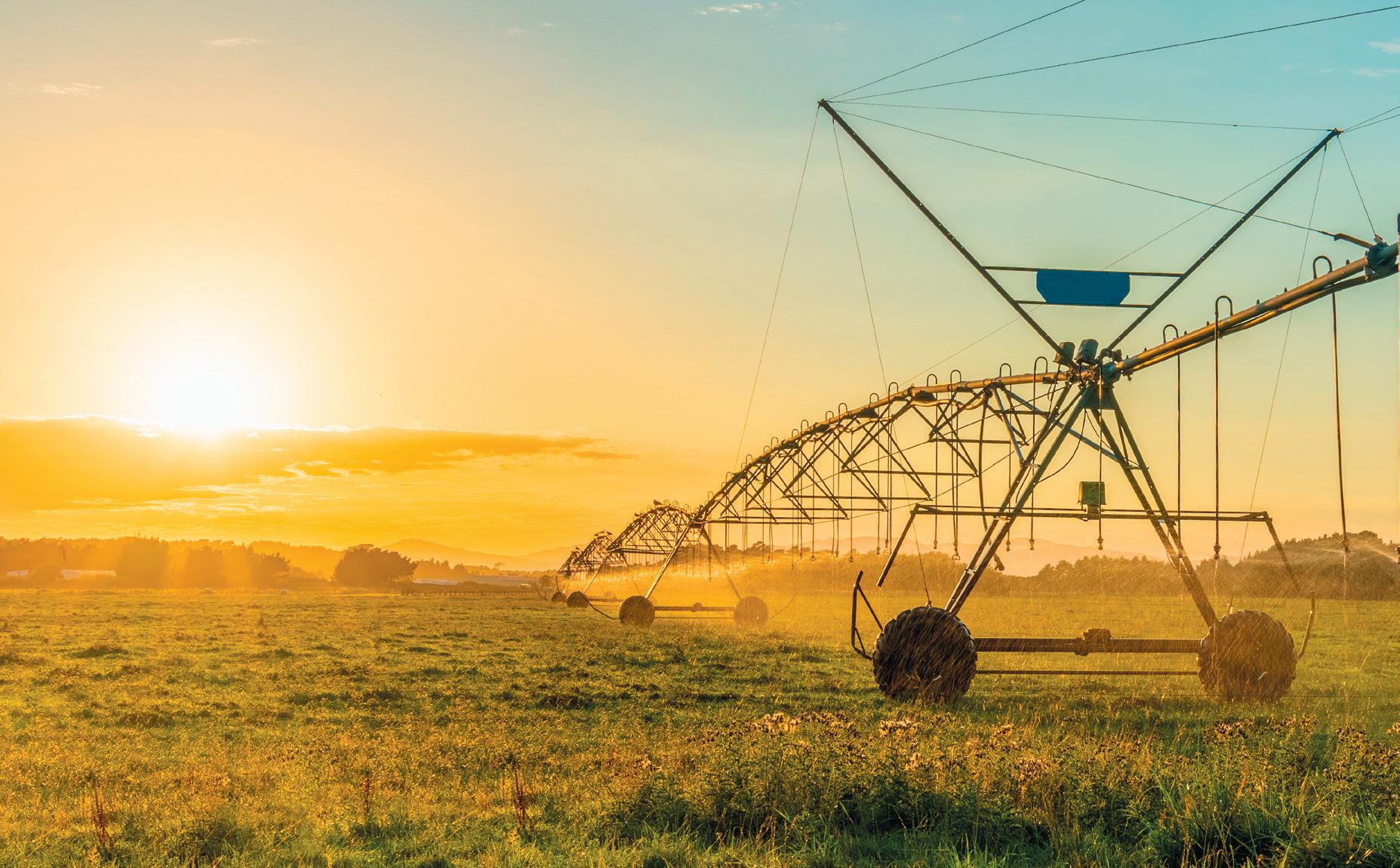
ANDREW 022 183 2018 andrew@onfarmdata.com
LYALL 021 223 8666
l.rarity@onfarmdata.com FOR A QUOTE CONTACT
See our other services at www.onfarmdata.com

EFFLUENT APPLICATION BY Direct injection, underslung (single or multiple zones) tower guns?
ONFARM DATA CAN Monitor, control and record this for you.
Pump start / stop I Area applied Application rate I Fail safe systems

Exclusion zones over tracks, waterways and more
ANDREW 022 183 2018 andrew@onfarmdata.com
GIVE US A CALL TO DISCUSS YOUR NEEDS What
LYALL 021 223 8666 l.rarity@onfarmdata.com


32 May 2024 CANTERBURY FARMING WATER & IRRIGATION
do we do? Flow meters and compliance monitoring | Level monitoring - wells, ponds, grain silo | Pivot control Effluent control and proof of placement | Fertigation systems - turn key design options
else


CANTERBURY FARMING May 2024 33 ACTION POWER SPORTS 522 BLENHEIM ROAD, CHRISTCHURCH PH: 03 943 5391 CANAM NORTH CANTERBURY 303 FLAXTON ROAD, RANGIORA PH: 03 313 5977 EAST COAST POWERSPORTS 724 EAST ST, NETHERBY, ASHBURTON PH: 03 307 4846 EAST COAST POWERSPORTS 127 HILTON HIGHWAY, WASHDYKE, TIMARU PH: 03 688 7517 RURAL WHEELS




Ford adding to Ranger line-up
Ford is adding to its Ranger line-up with the addition of the new Ranger Tremor, a limited edition in New Zealand.
] Article supplied by Ford NZ
David Herbert, marketing manager at Ford New Zealand, sad the Tremor is aimed at customers who require enhanced on and offroad comfort while retaining 3.5t towing capability.
“Tremor is customised off the shelf for any adventure, and like our recent special editions though, it will go quickly,” Herbert said.
“Tremor has all of the enhanced capabilities of the recently sold out Wildtrak X, and it’s based on the Sport series which makes it a more affordable option suited to hard-working Kiwi environments.”
The Ranger Tremor Double Cab uses the same 154kW/500Nm 2.0L Bi-Turbo diesel engine and full-time four-wheel drive (4WD) system, and benefits from the innovative Trail Turn Assist feature that allows the vehicle to manoeuvre around the tightest off-road turns with ease.
The Tremor is visually distinguished from the rest of the line up through the addition of a black honeycomb off-road front grille that is
equipped with the same LED auxiliary driving lights, along with unique Bolder Grey exterior details for the lower sections of the front bumper and H-bar, fender vents, mirror caps, door handles, and rear bumper.
This is complemented by extended wheel arch mouldings in Bolder Grey that frame the purposeful 265/70 R17 all-terrain General Grabber AT3 tyres with white lettering, mounted on 17-inch Asphalt Black machinefaced alloy rims.
Ranger Tremor’s go-anywhere abilities are reinforced with the standard fitment of a tough enthusiast-rated steel bash plate, steel underbody protection for the engine, transfer case and fuel tank, two front tow hooks, cast aluminium side steps and the distinctive long-leg tubular sports bar.
The tough off-road enhancements incorporate the same reworked suspension with specially developed Bilstein Position-Sensitive Dampers as used on the Wildtrak X. This unleashes a 24mm increase in ground clearance accompanied by a 30mm wider track.
Along with the muscular appearance of



the Tremor, there’s a lot going on under the skin to further enhance this unique Ranger’s ‘Built Ford Tough’ off-road capabilities.
Taking on the toughest conditions, and a whole lot more, with confidence is as easy as selecting the appropriate Drive Mode via the rotary dial, comprising Normal, Eco, Tow/ Haul, Slippery, Mud/Ruts, Sand and Rock Crawl. The system adjusts the throttle response, gearshifts, traction and stability control, rear diff-lock, as well as the steering and braking system to optimise vehicle performance to suit the terrain.
Additionally, Ranger Tremor joins Wildtrak and Raptor as the only models in the Rang-


Added: Ranger Tremor’s goanywhere abilities are reinforced with the standard fitment of a tough steel bash plate, steel underbody protection for the engine, transfer case and fuel tank, two front tow hooks, cast aluminium side steps and the distinctive long-leg tubular sports bar.
er line-up available with Ford’s full-time four-wheel drive system, which uses an electromagnetic transfer case (eMTC) mated to the 10-speed automatic transmission with advanced eShifter and electronic parking brake.
It offers the convenience and safety of permanent 4WD in 4 Auto (4A) mode which is suitable for both on and off-road driving. The system also includes 4 High (4H) that provides an equal split of the power delivery to the front and rear axles for driving on loose surfaces, and 4 Low (4L) for tackling arduous off-road conditions.
There’s also a two-wheel drive (2H) mode which disengages the front axle for rear-wheel drive only. Another benefit of the 4WD system is the fitment of disc brakes all-round for improved on and off-road braking performance.
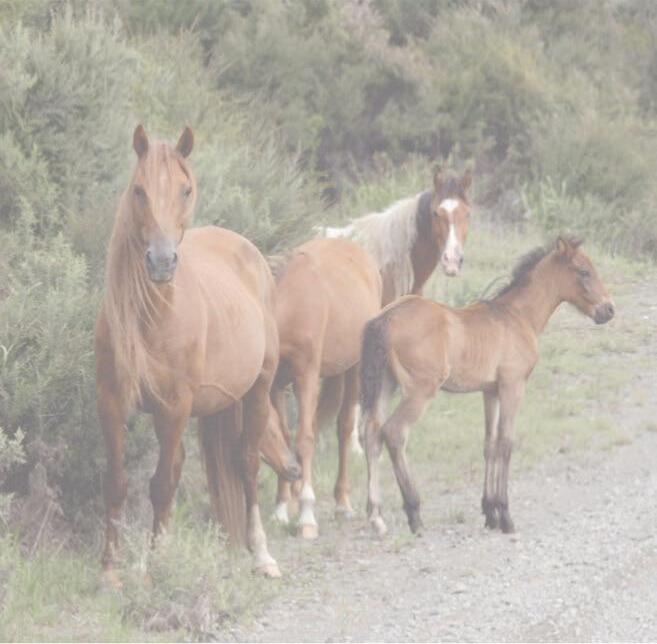
































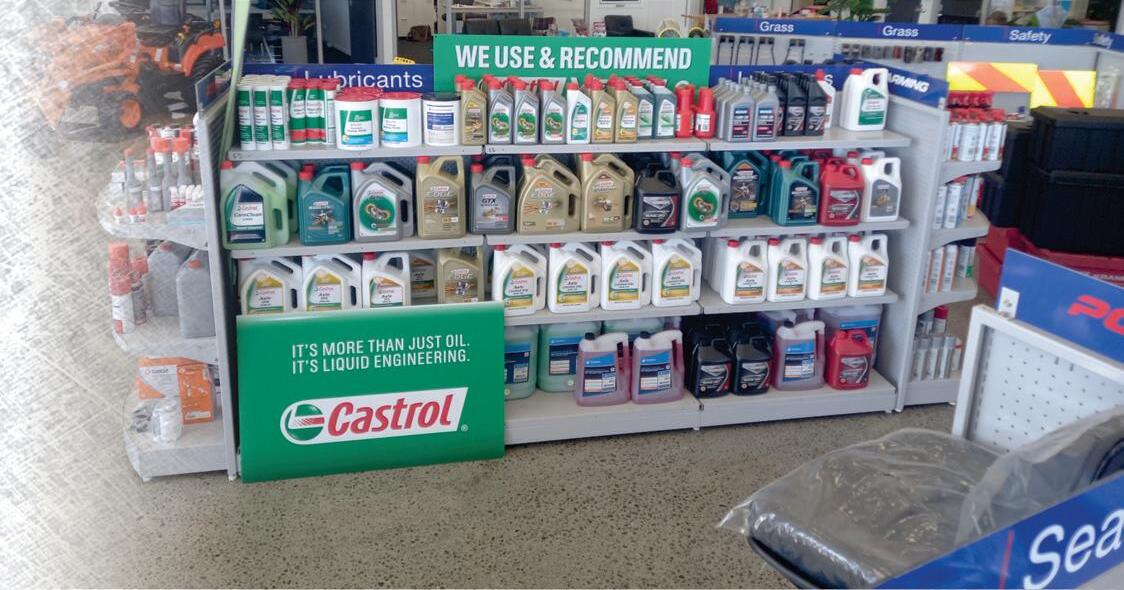





34 May 2024 CANTERBURY FARMING Property | Family | Wills Trusts | Estates | EPAs | Rural Business | Traffic | Employment Leeston (03) 324 3033 Email: lawyers@anglands.co.nz | www.anglands.co.nz Solicitors of Selwyn since 1965
Ronald W. Angland & Son LAWYERS


















CANTERBURY FARMING May 2024 35 YAMAHA THROW A LEG OVER A LEGEND KODIAK 450 4wD FIND OUT MORE SAVE $ 917 ** RRP EXC GST rIDE aWAY NOW $ 12,995 Make Smart Choices Zero Deposit Zero Repayments for 12 months 5.95% P.A. Fixed Rate* 3 Year Full Factory Warranty^ *FINANCE DISCLAIMER: Zero deposit and annual repayments only available to asset backed commercial applicants with a NZBN registered for a minimum of 1 year. First repayment due after 12 months and 5.95% p.a. fixed interest rate up to 36 month loan term. Available on AG125, AG200, TTR230, YFM450FB, YFM450FBP, YFM700FBP, YFM700FAP, YFM700FAPSE, YXM700P, YXM700PSE, YXC700P, YXE850PU, YXE850PSE, YXF850PSE, YXE100PSE, YXF1000PSE, YXE1000PSP. Offer available from 12 February 2024 to 31 July 2024. Credit criteria, fees, charges and conditions apply including an establishment fee of $325, $8.05 PPSR fee and a dealer administration fee. Not in conjunction with any other offer. Finance to approved applicants by Yamaha Motor Finance New Zealand Ltd. (YMF) NZBN 9429036270798 FSP 9622. ^ Warranty cover is subject to a range of requirements including following the service schedule & applicable vehicle load/towing limits. Service Intervals are dependent on usage and environmental factors. Finance and savings offer available from12 February 2024 TO 31 July 2024. RURAL WHEELS

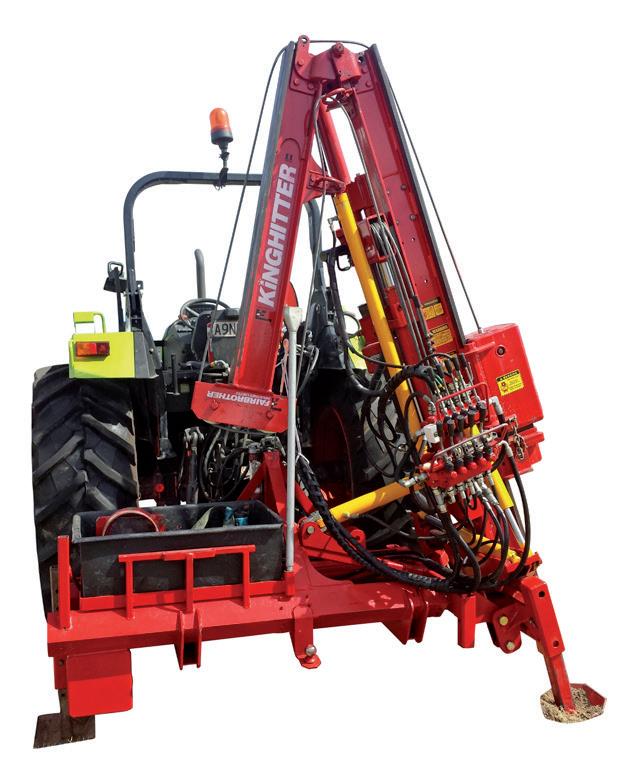































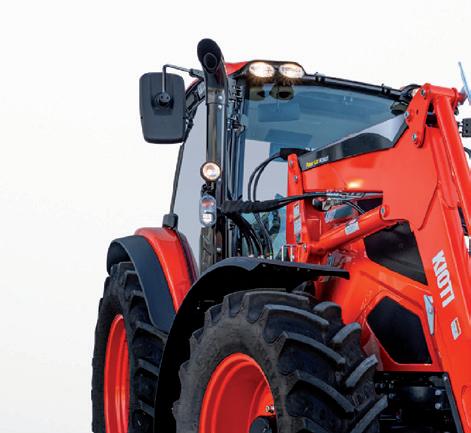





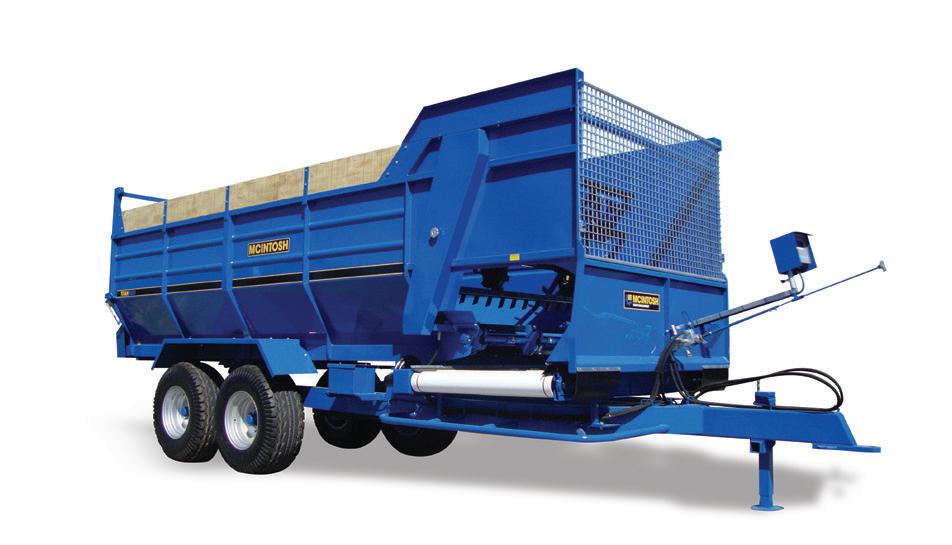

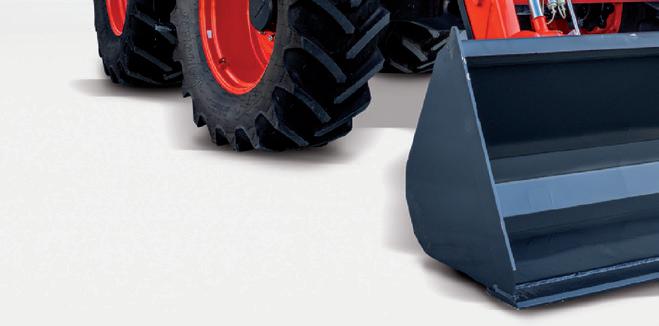






















36 May 2024 CANTERBURY FARMING Geoff McCabe Dealer Principal 021 220 9544 Jimmy Leigh Sales Representative 027 405 6941 Joel Parris Sales Representative 027 435 0884 Angus Handisides Sales Representative 027 234 0630 Brad Fisher Service Manager 027 507 1018 Roger Hunter Parts Manager 027 507 1022 Power Farming Canterbury 1 George Holmes Rd, Rolleston Trailed 4 Bale Feeder Feed out either side from the wide cradle Silage Wagons From 9cbm to 27cbm Robust NZ build for NZ conditions All with heavy duty 1-1/4” drives and 3” 12,000 lb chains for longer life Deep and wide cradle for better bale retention Double Bale Feeder Wide 2300mm cradle to get feed away from the tyres DEPOSIT OF $8,500 DEPOSIT OF $18,000 DEPOSIT FROM $19,500 0% INTEREST * 1/3RD IN 6 MONTHS 1/3RD DEPOSIT NOW 1/3RD IN 12 MONTHS JUST A BLO0DY GOOD TRACTOR Kioti HX-140 140hp, 8 speed powershift, huge cab, 4 years warranty *Terms and conditions apply. GST back month 3. $130000 +GST From 2.95% Interest 30% Deposit or trade Hyd top link and angle adjustment 90mm rock spike $20,300+GST *Terms, conditions and standard lending criteria apply. 30% deposit 1/3 deposit, 1/3 in six months, 1/3 in 12 months *Terms, conditions and standard lending criteria apply. 30% deposit 1/3 deposit, 1/3 in six months, 1/3 in 12 months 1/3 DEPOSIT 1/3 6 MONTHS 1/3 12 MONTHS 0% INTEREST CANTERBURY SPEC SPECIAL 4.3m mast 270kg hammer R90mm rockspike kit Only 1 available at this price! $18,000+GST $6,000 deposit $6,000 in 6 months $6,000 in 12 months TERMINATOR COMBO 4.3m hyd hinge mast Side mount terminator base Full hyd adjustment inc 300mm mast shift and rock spike kit $34,000+GST

































































































































































































































































 ] by Peter Scott
] Chair, Canterbury Regional Council
(Environment Canterbury)
] by Peter Scott
] Chair, Canterbury Regional Council
(Environment Canterbury)




















































































































































 ] Dr andrew Dark
] Aqualinc
] Dr andrew Dark
] Aqualinc

































































































































